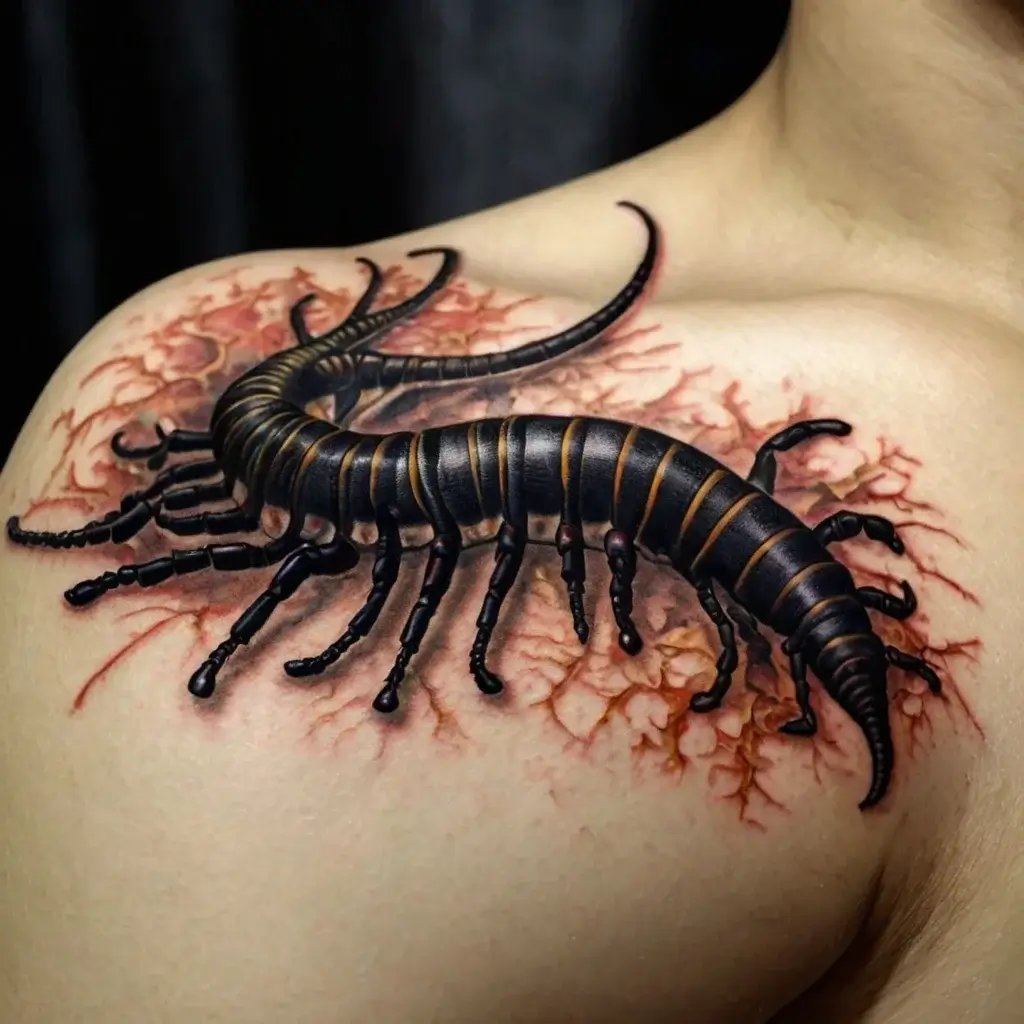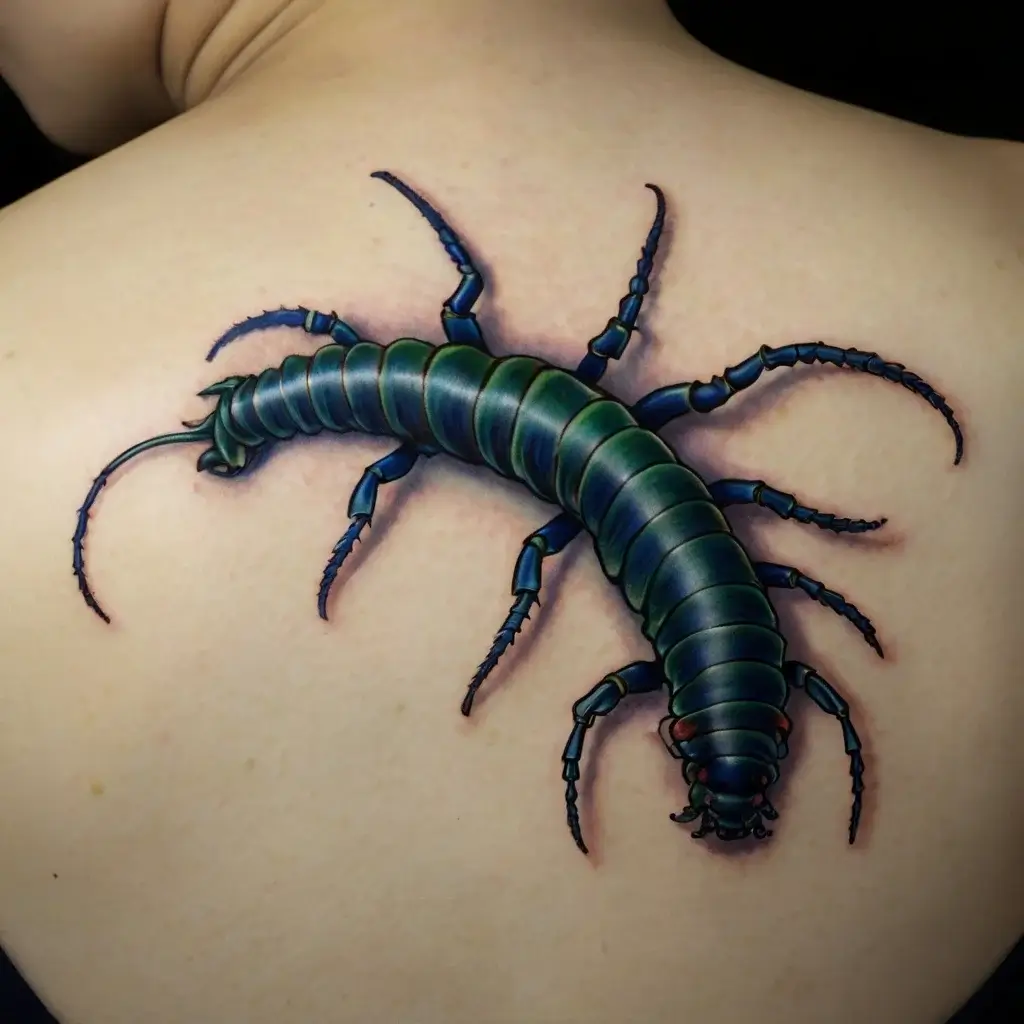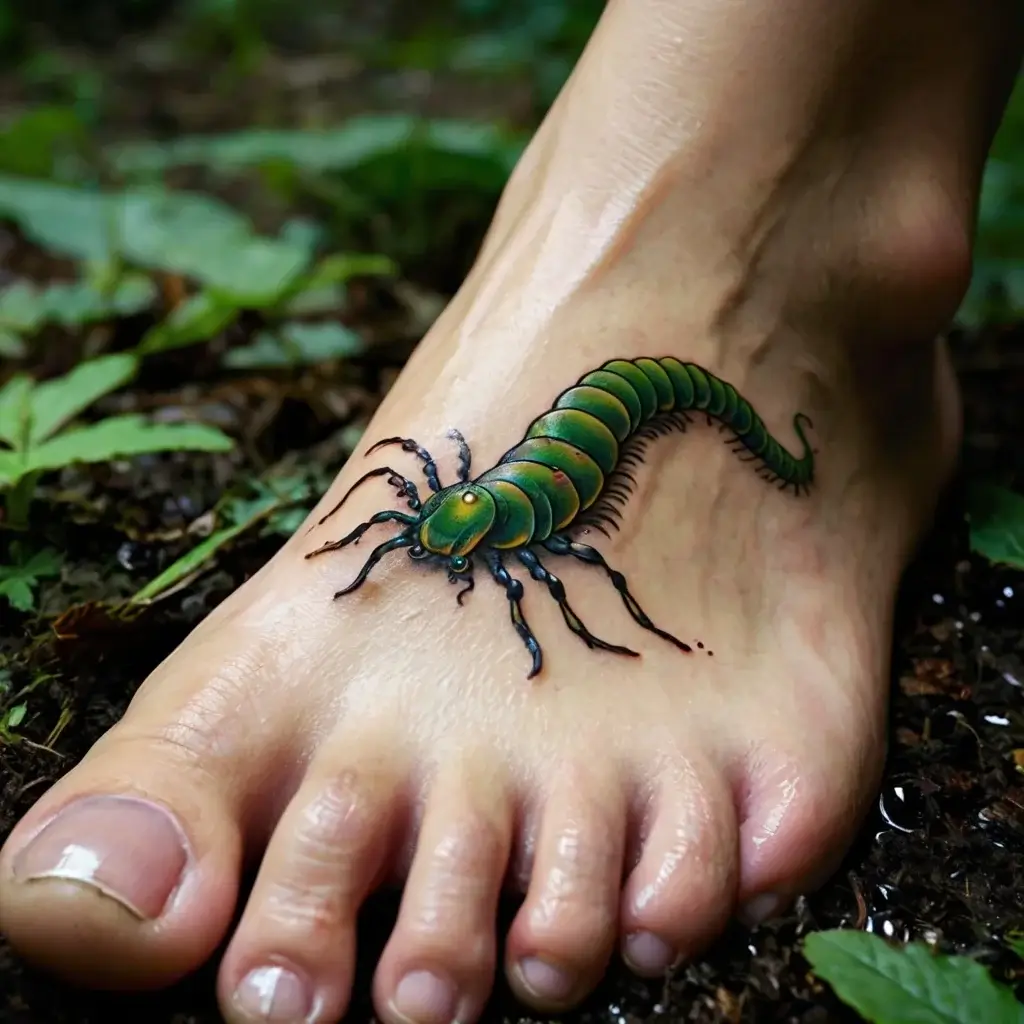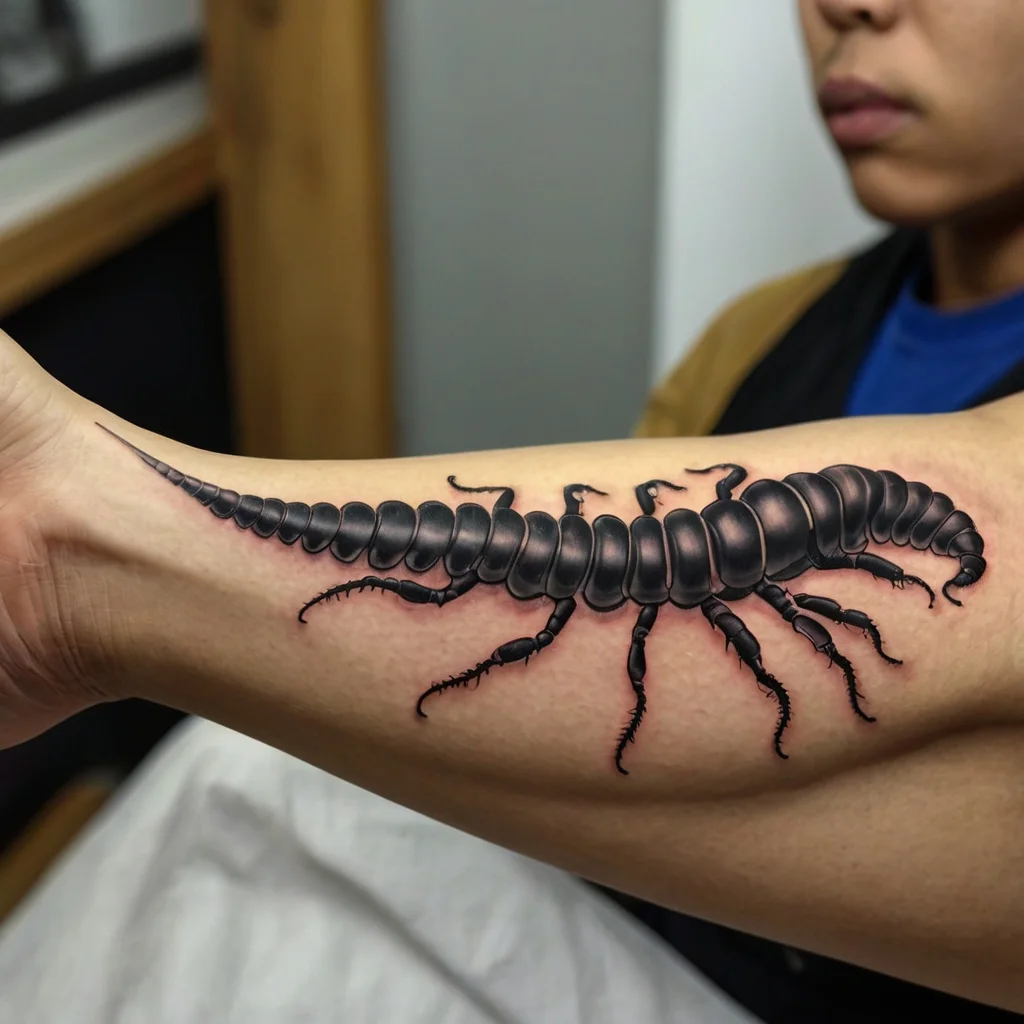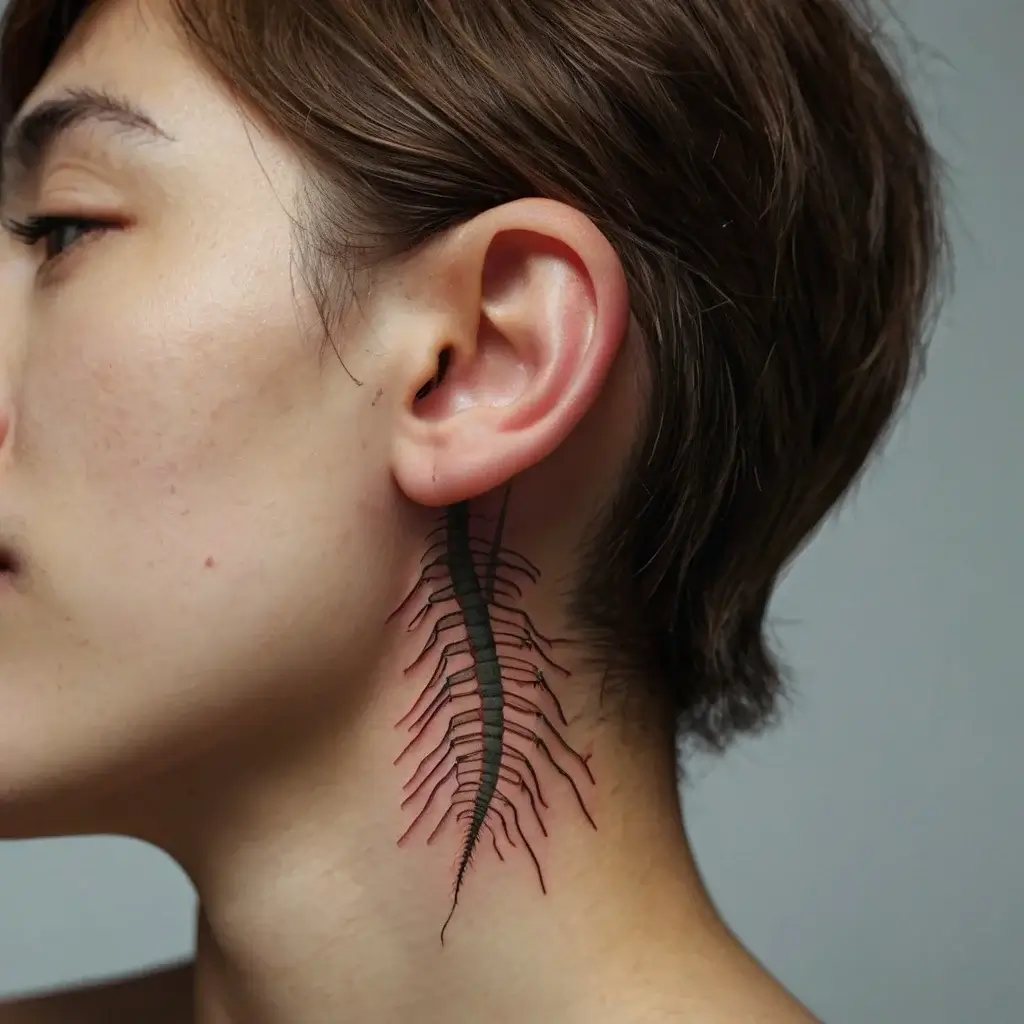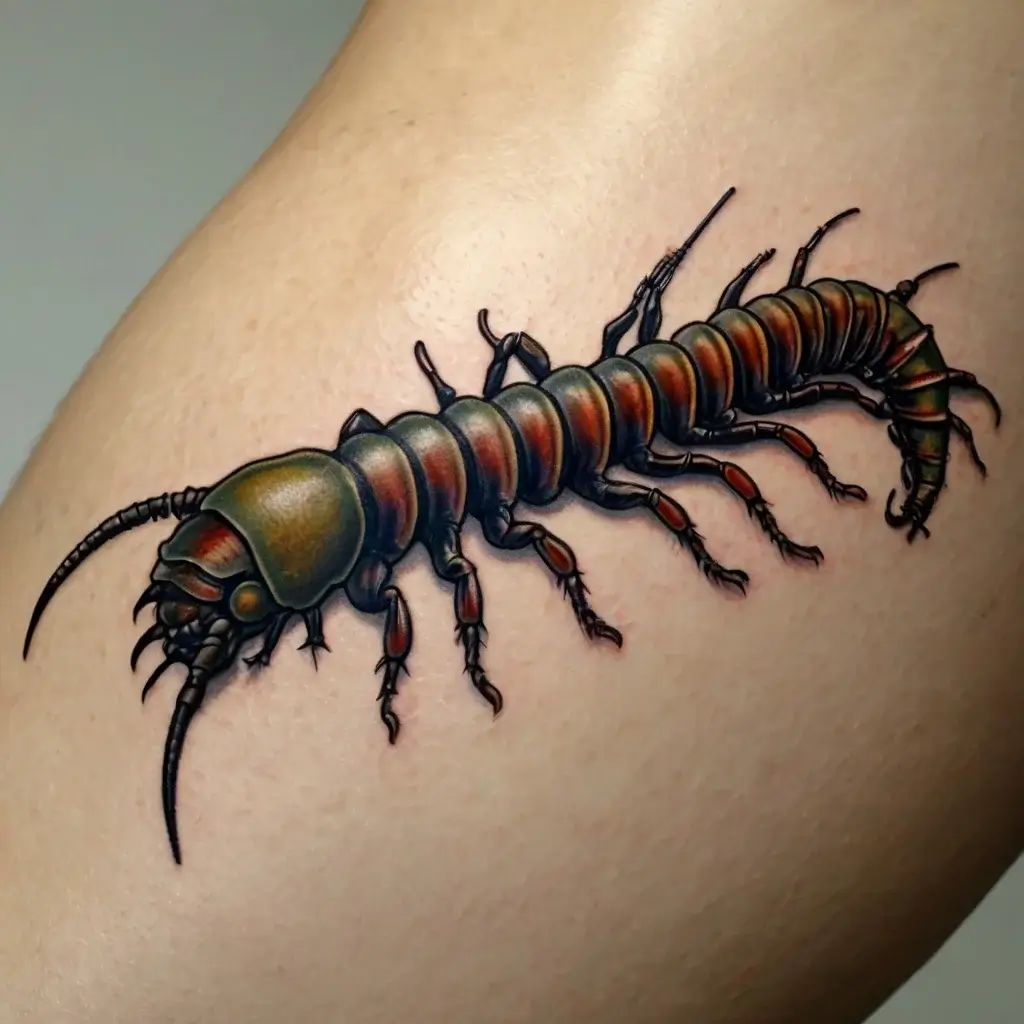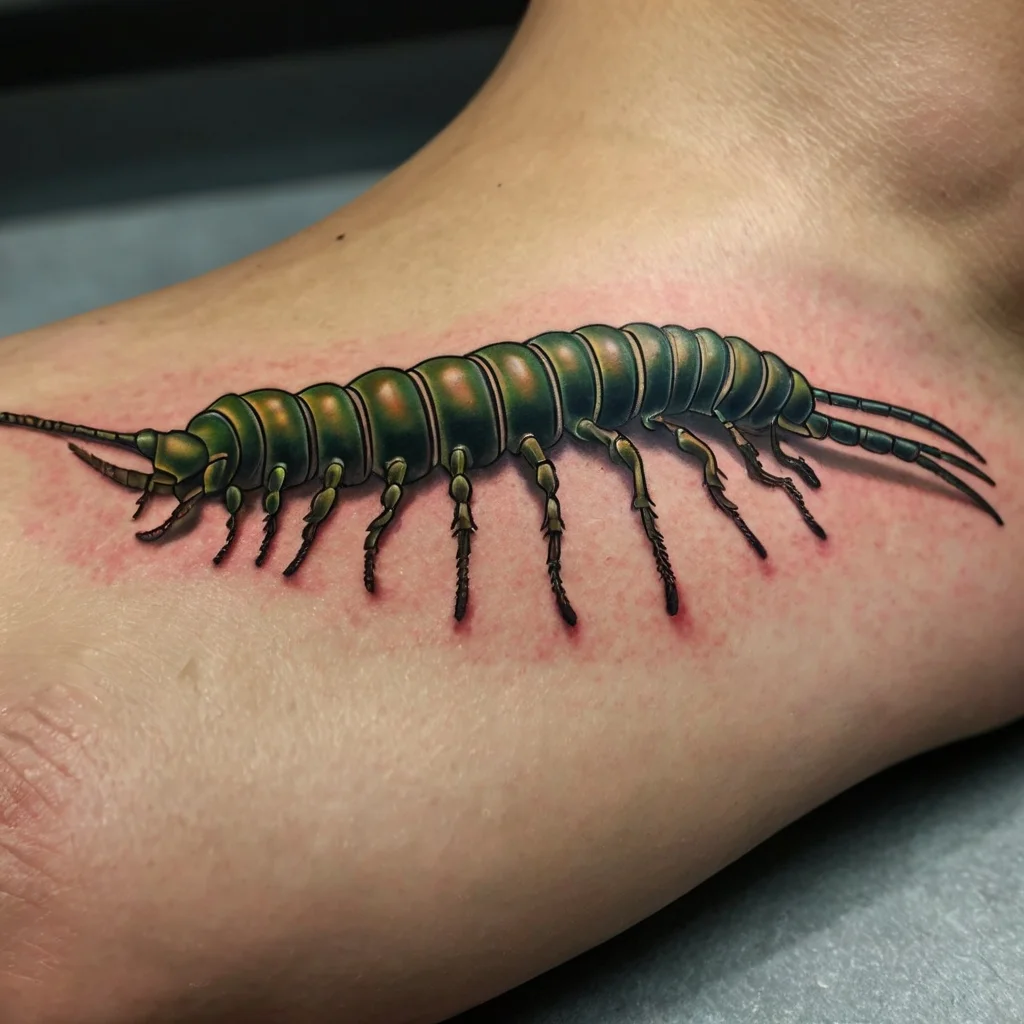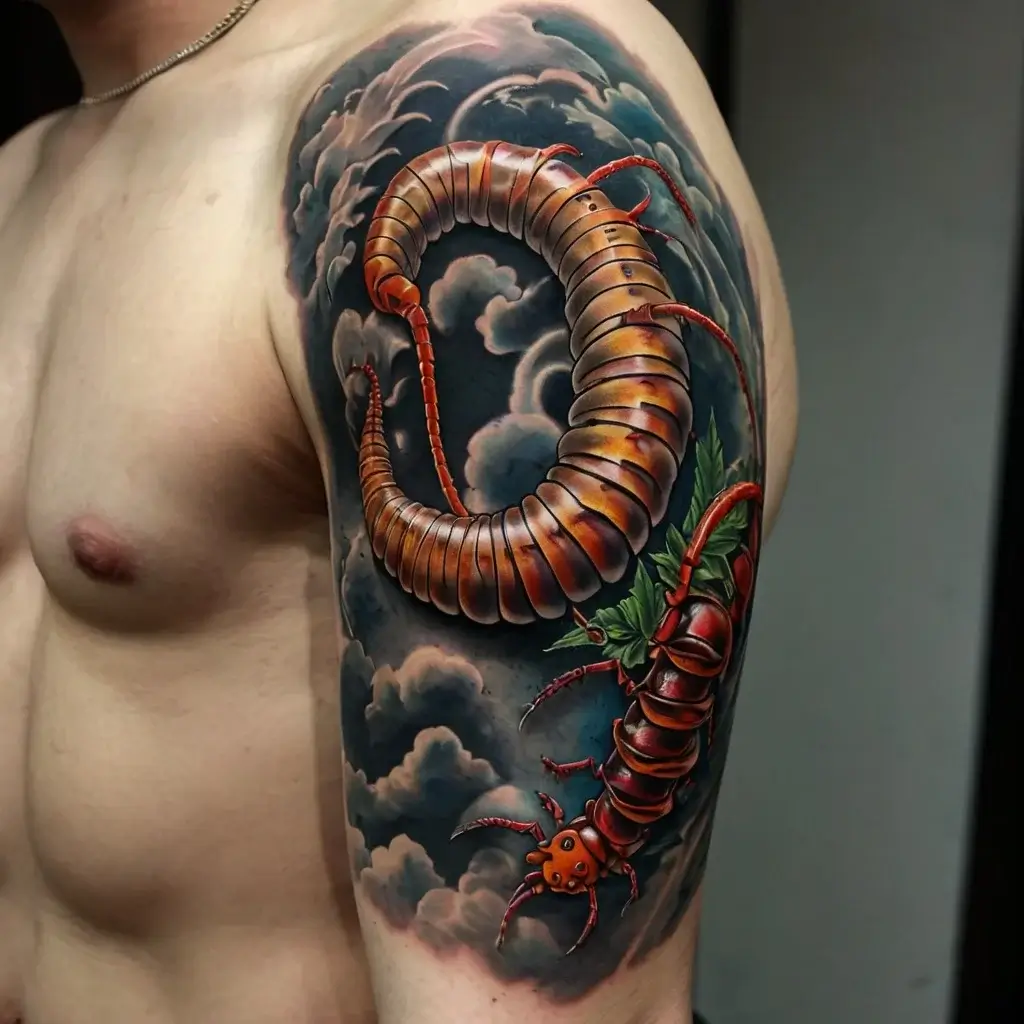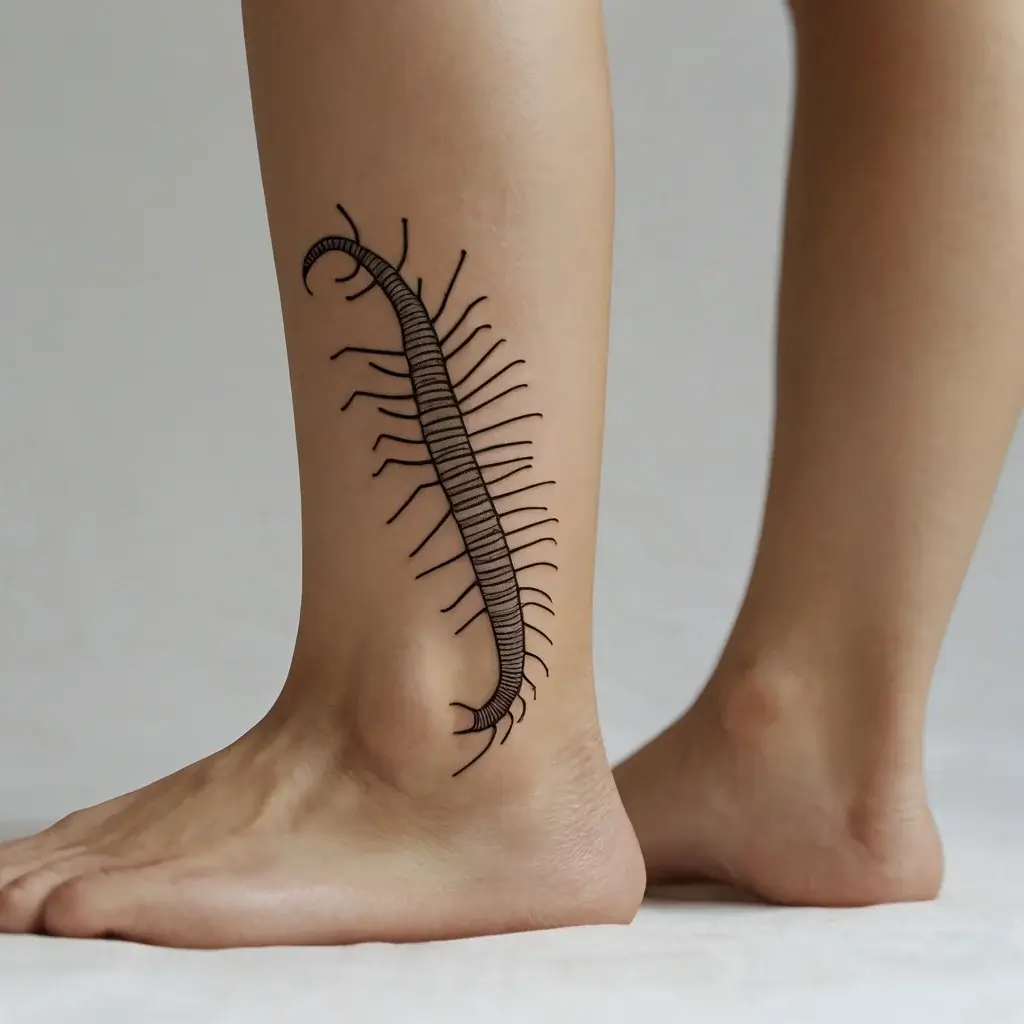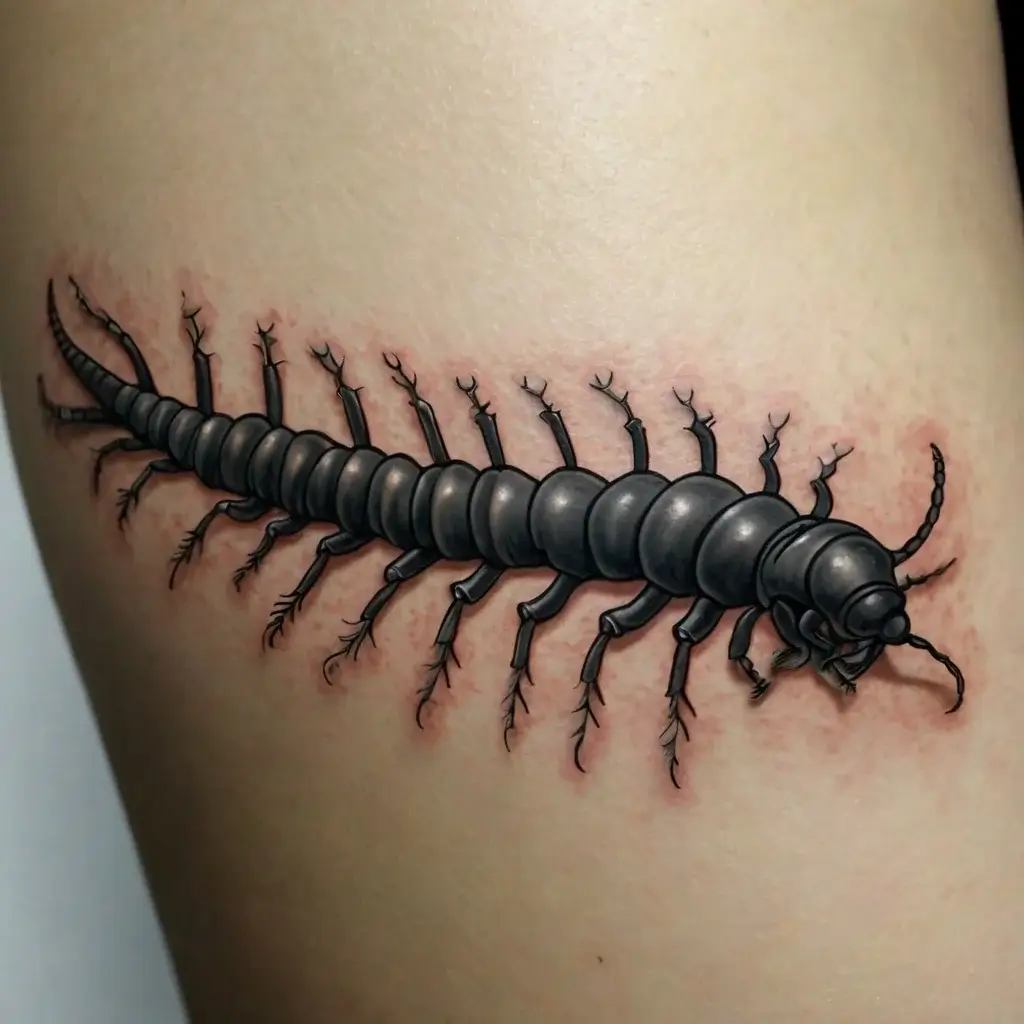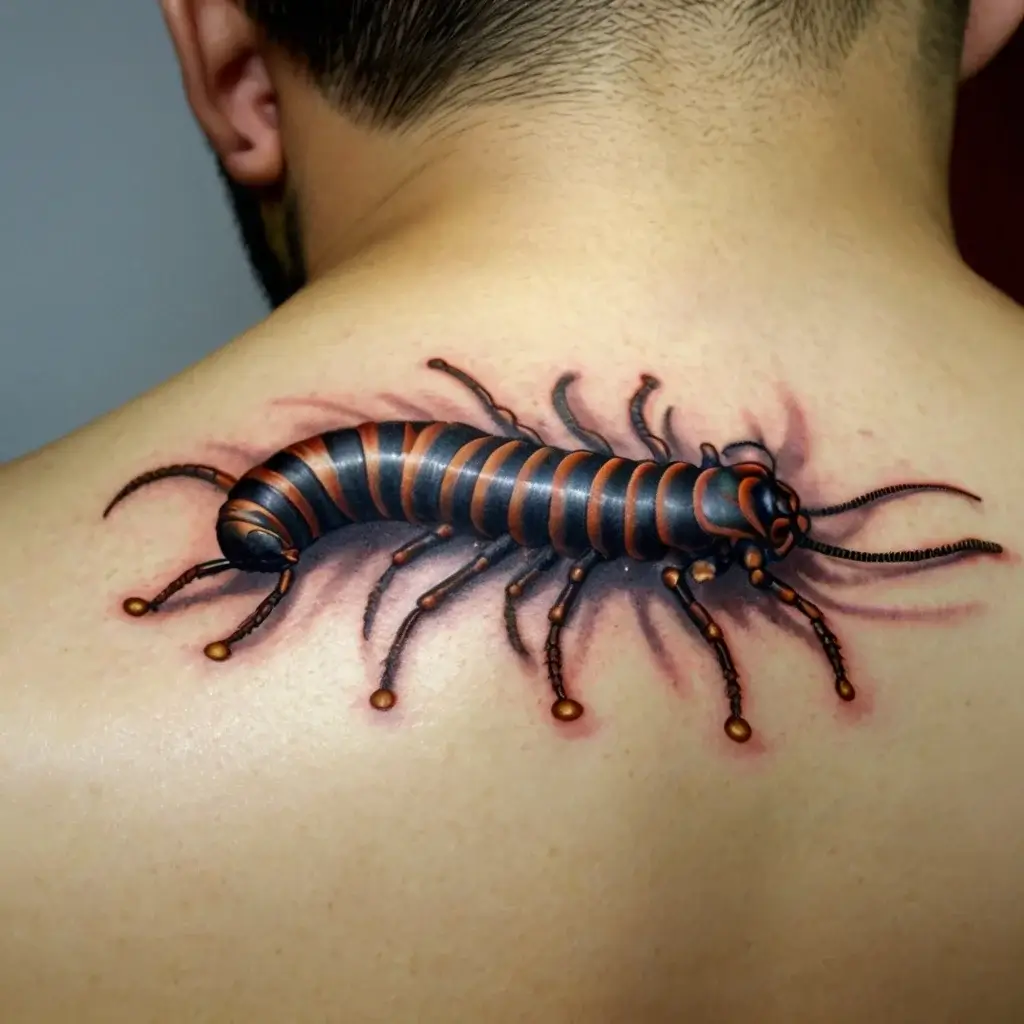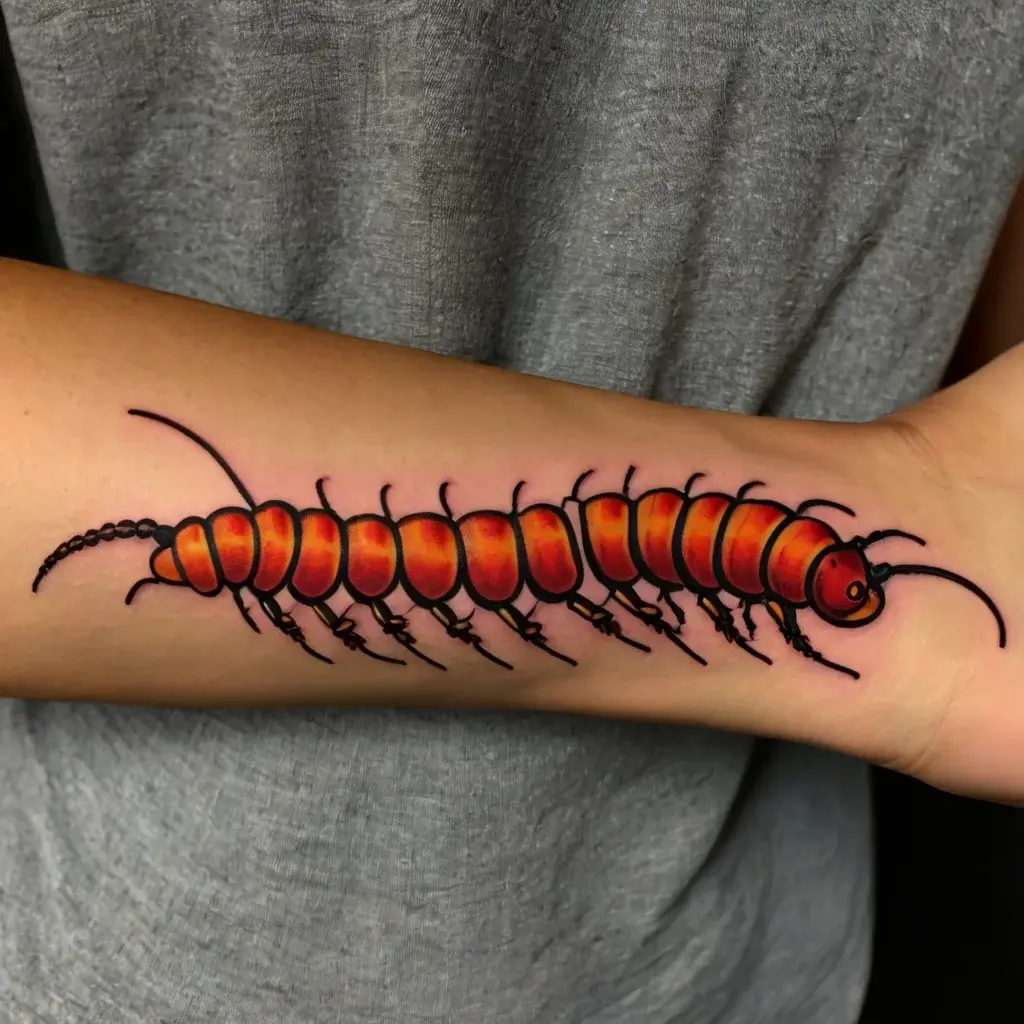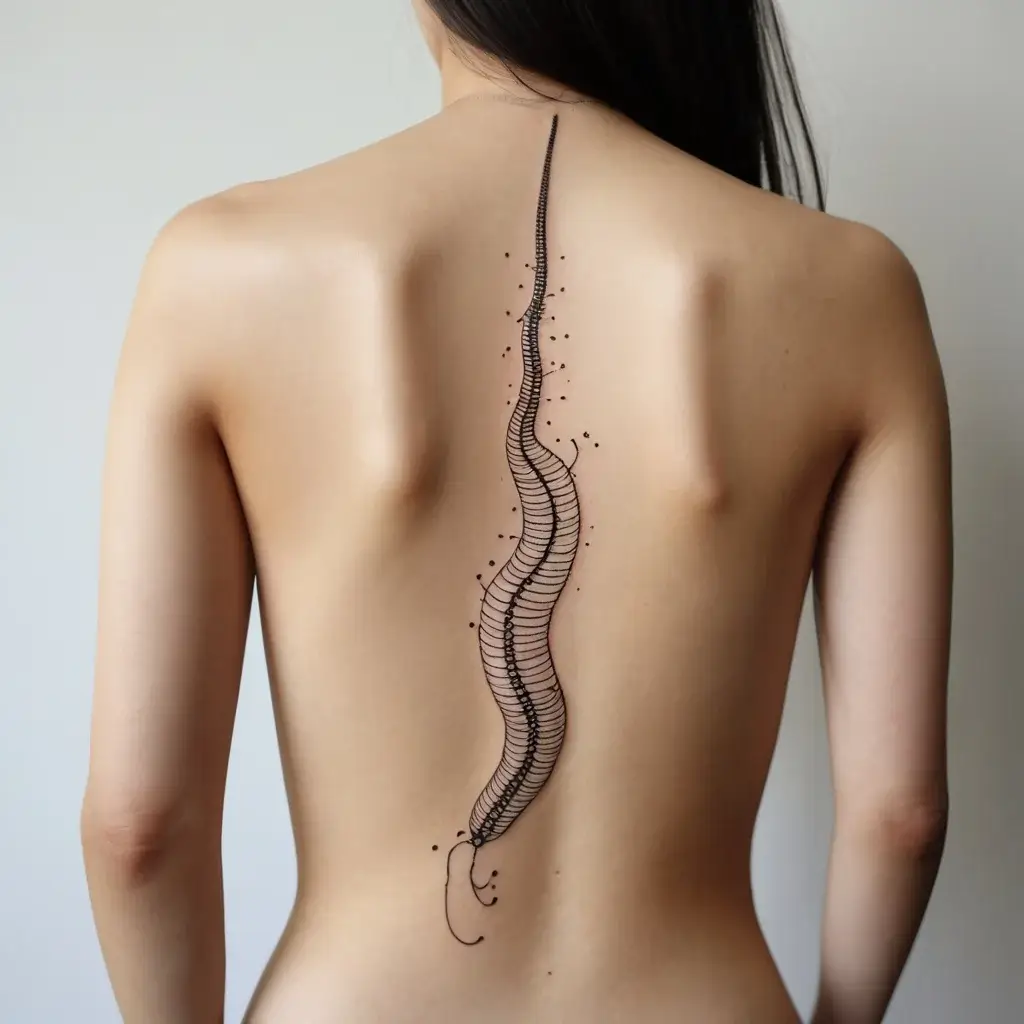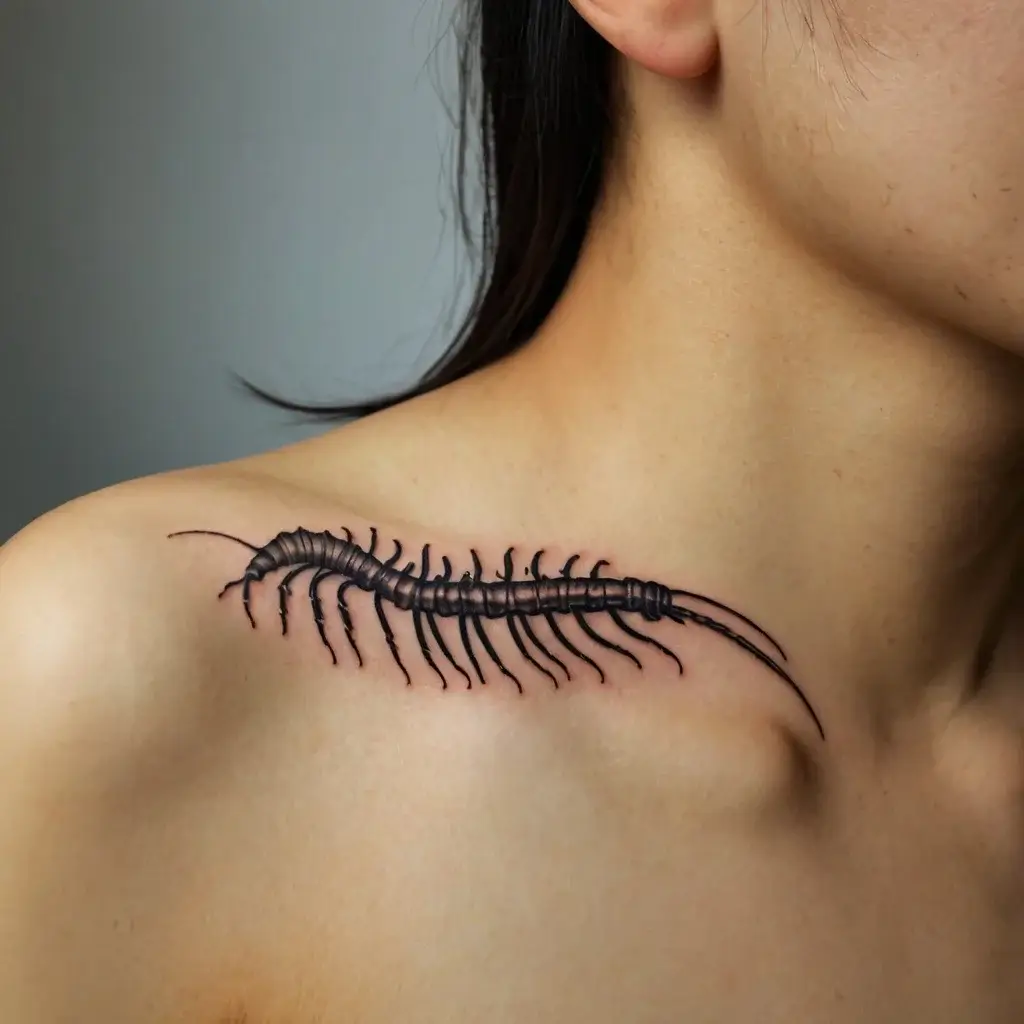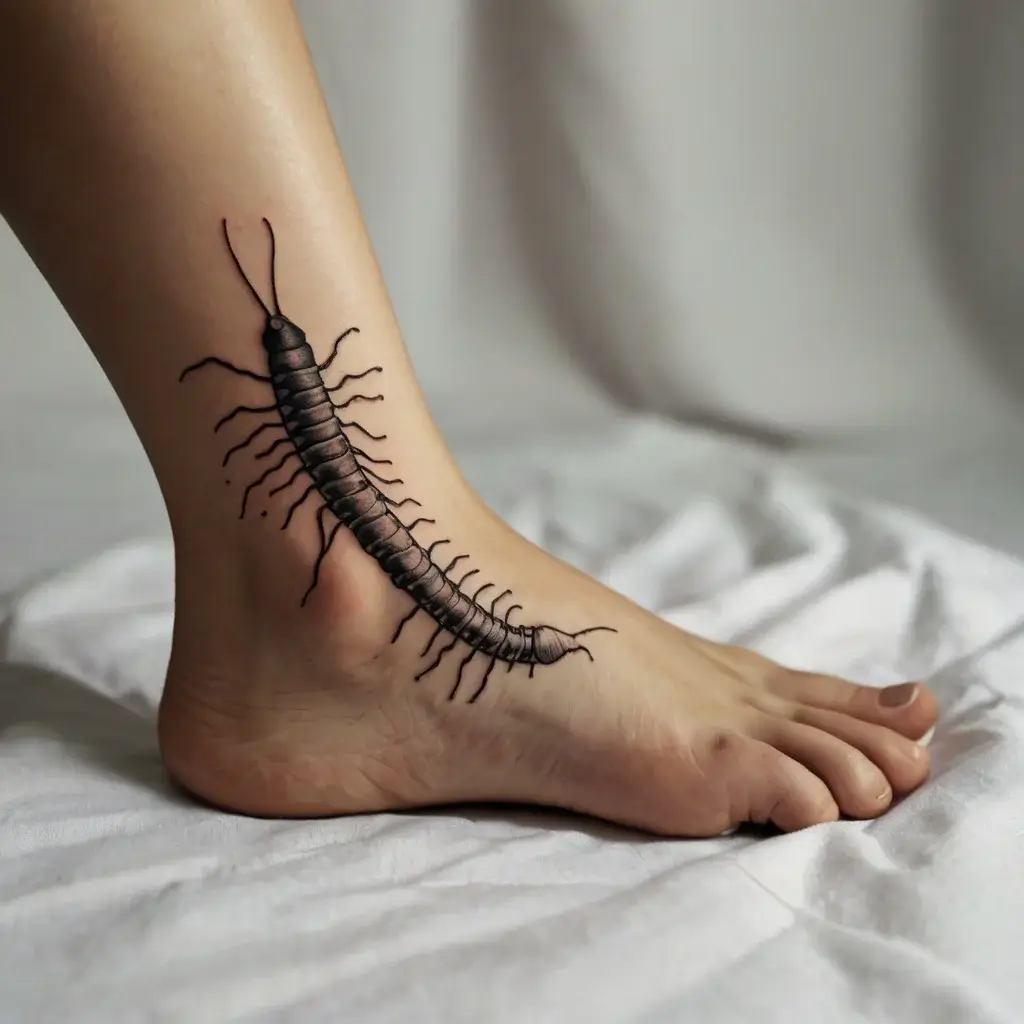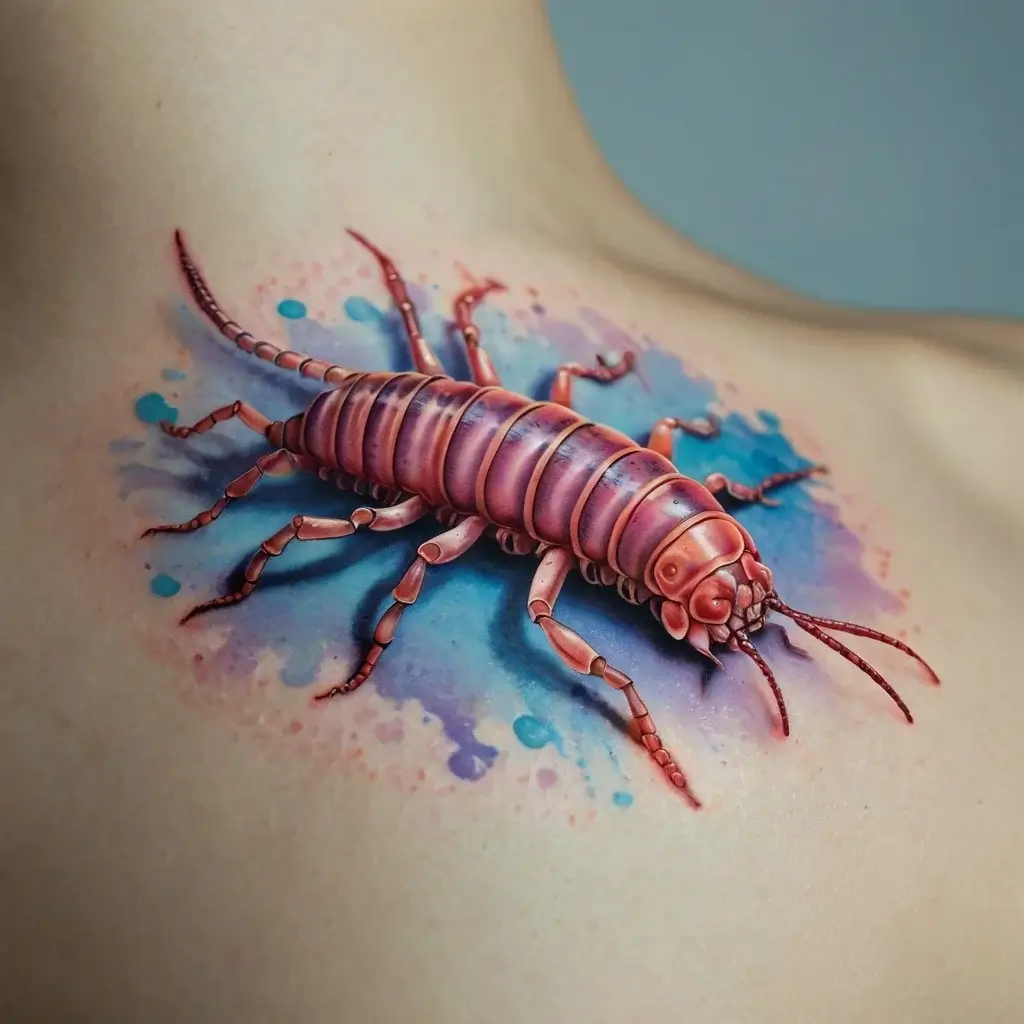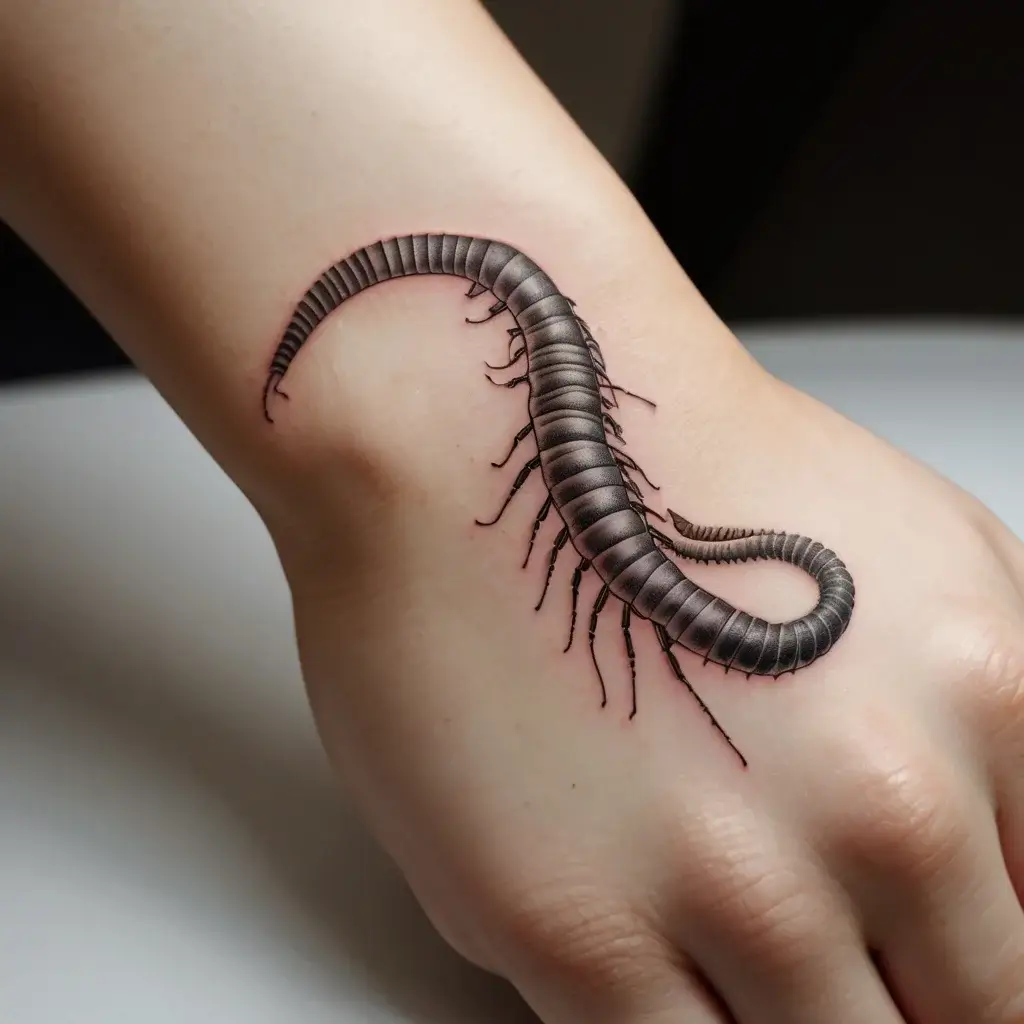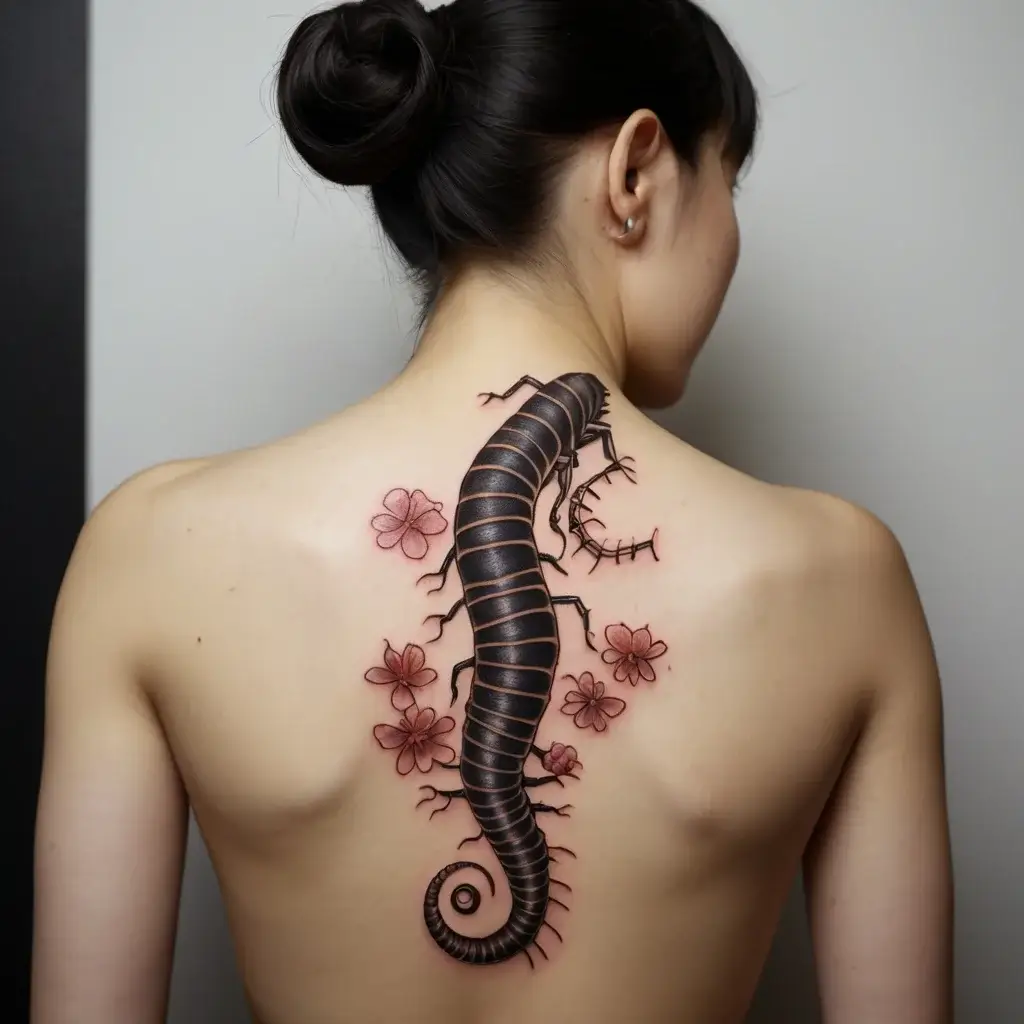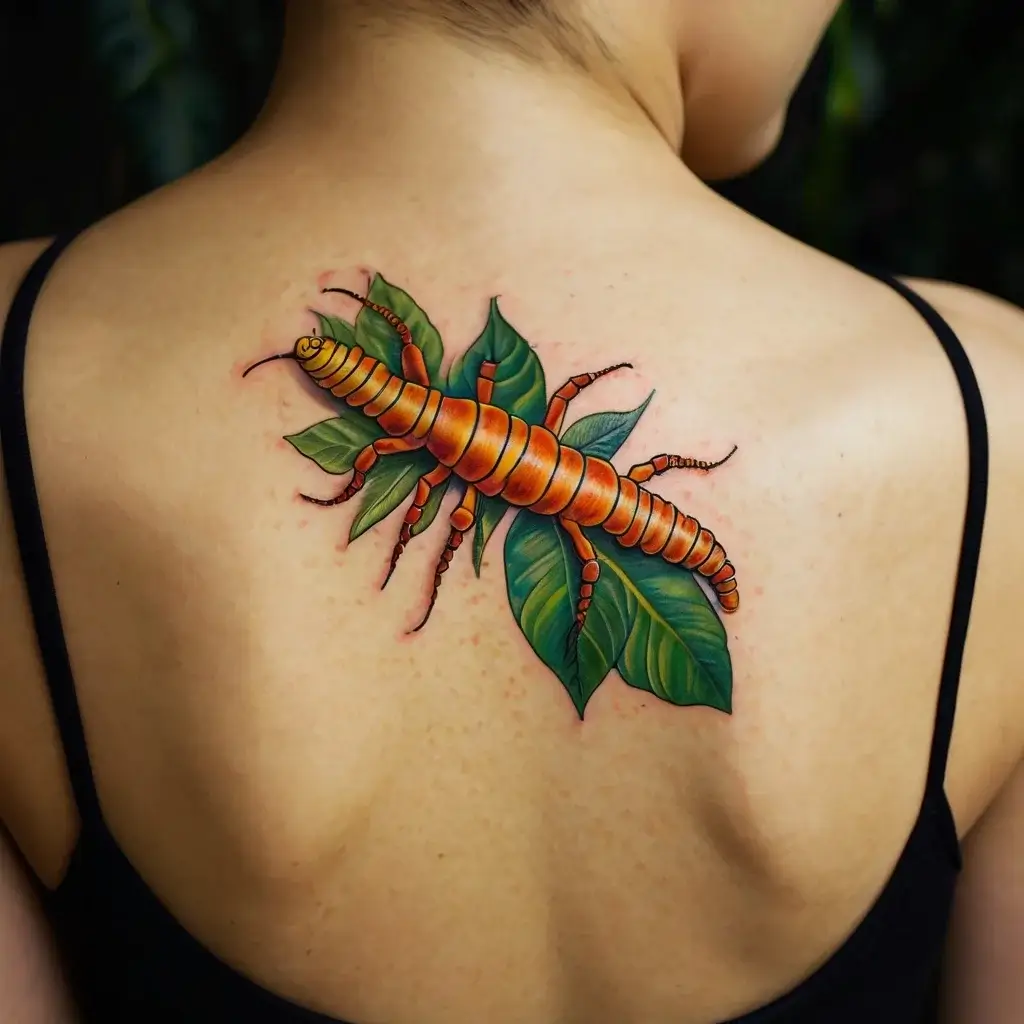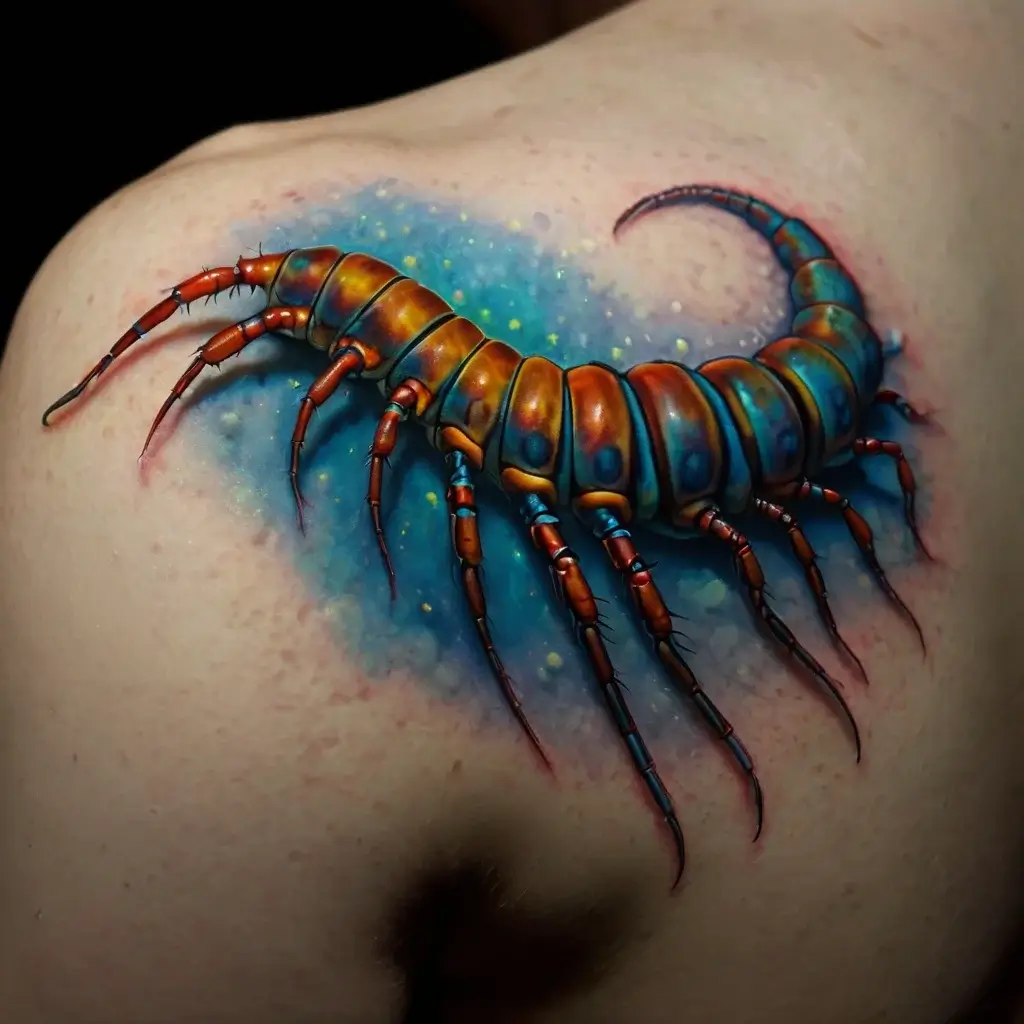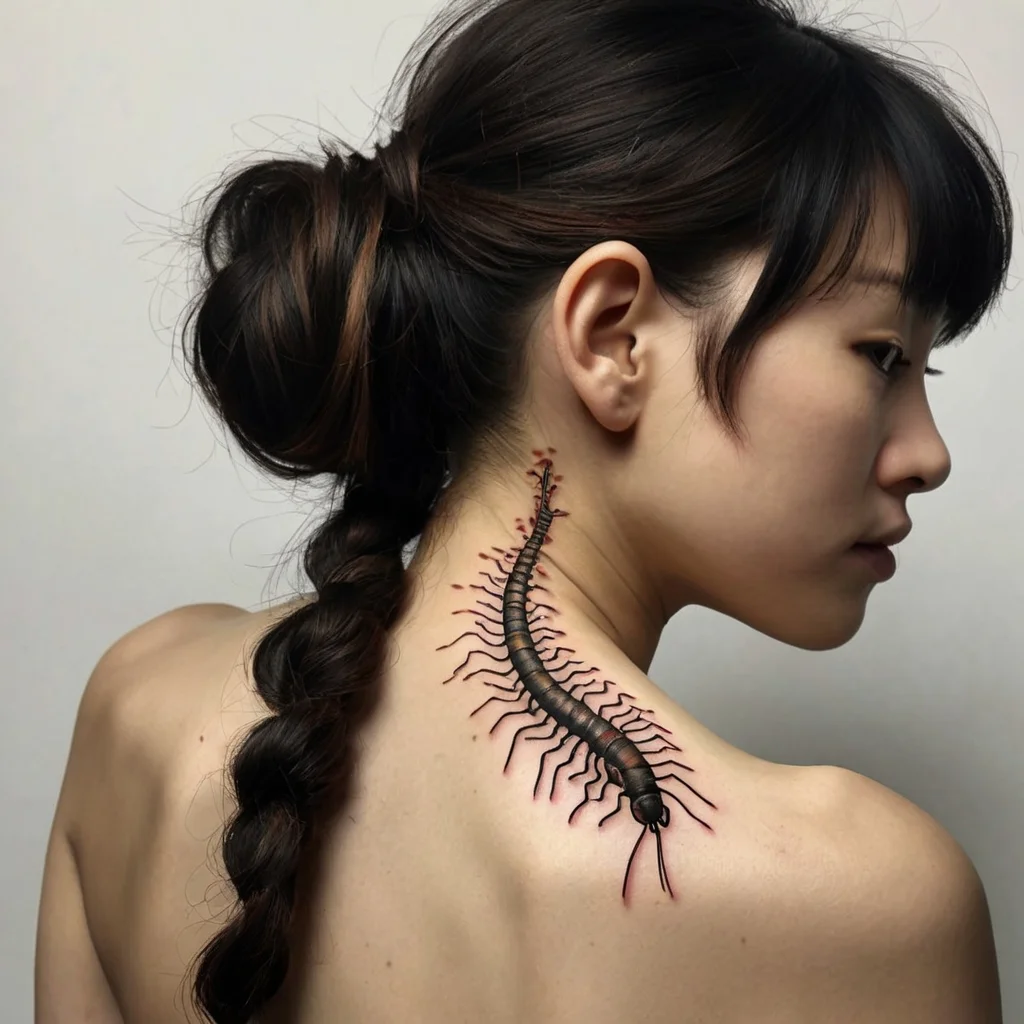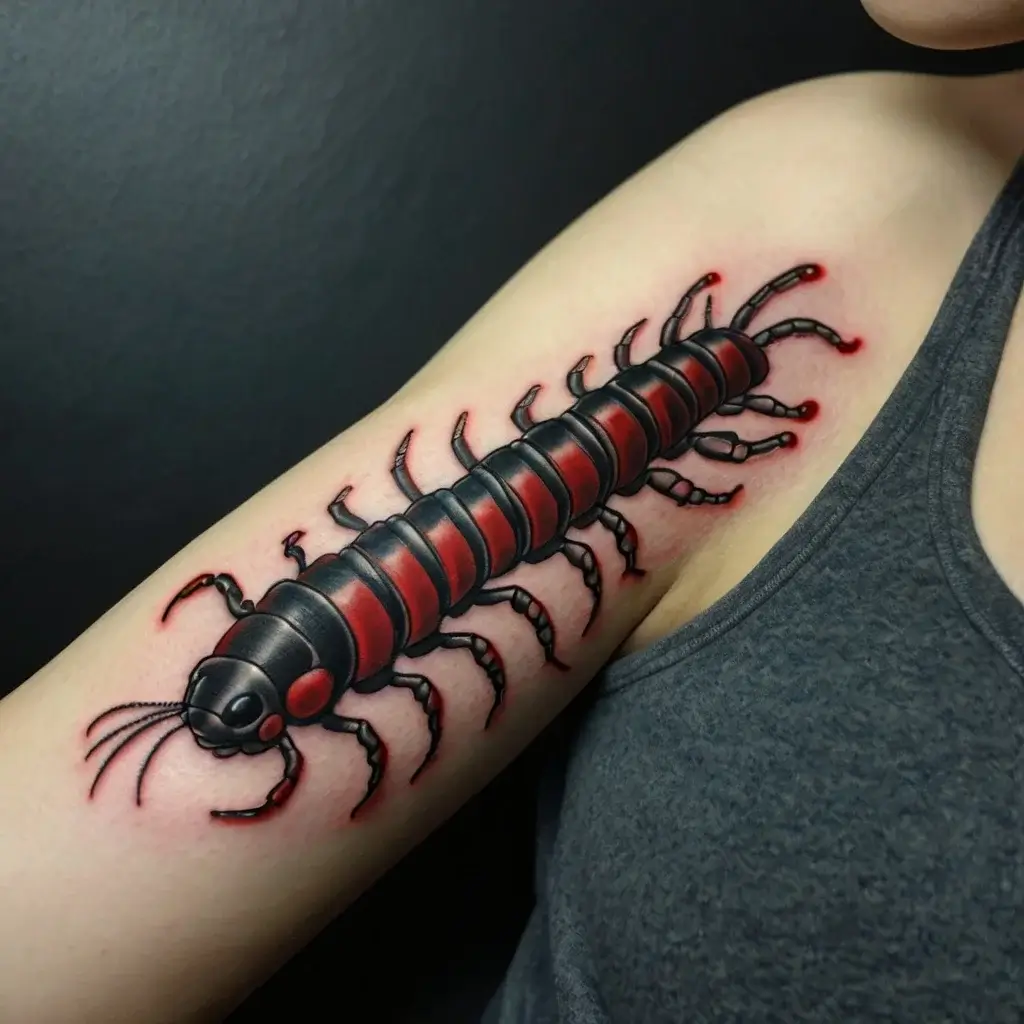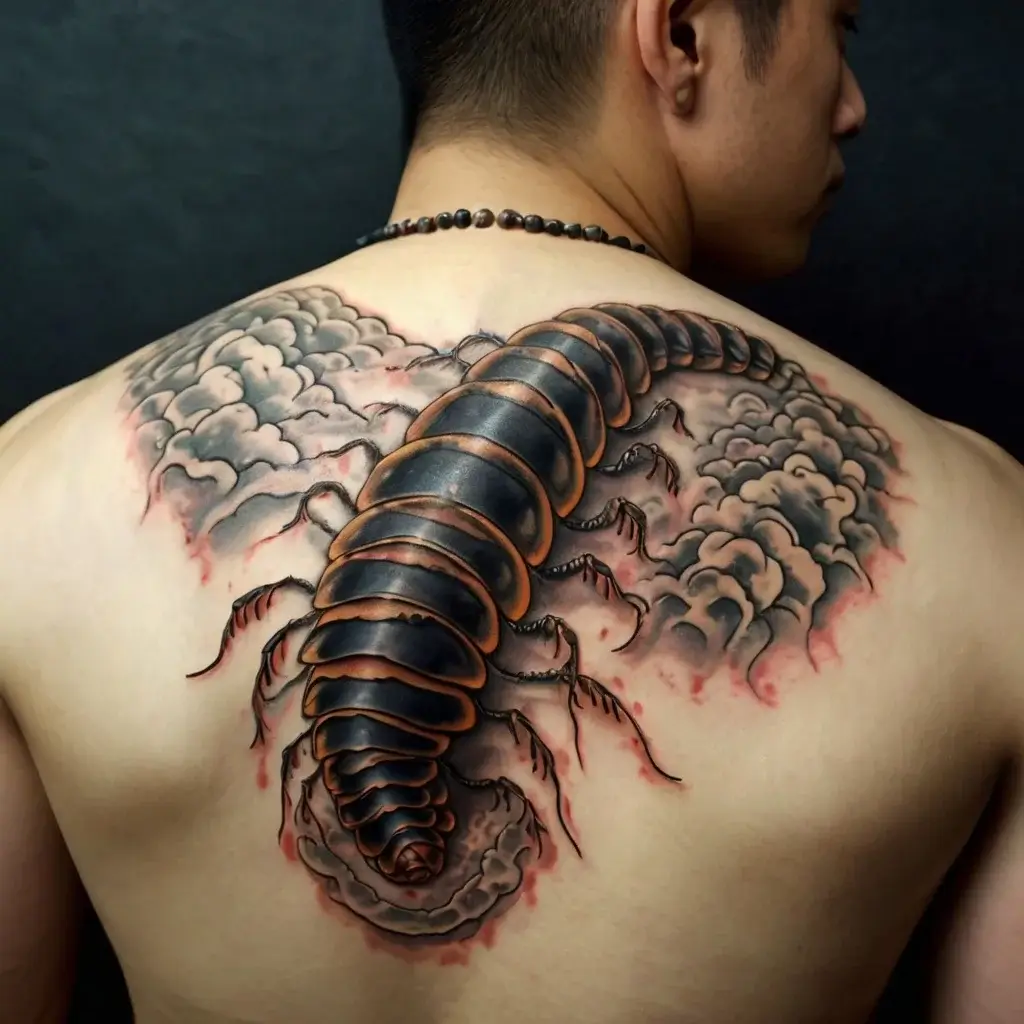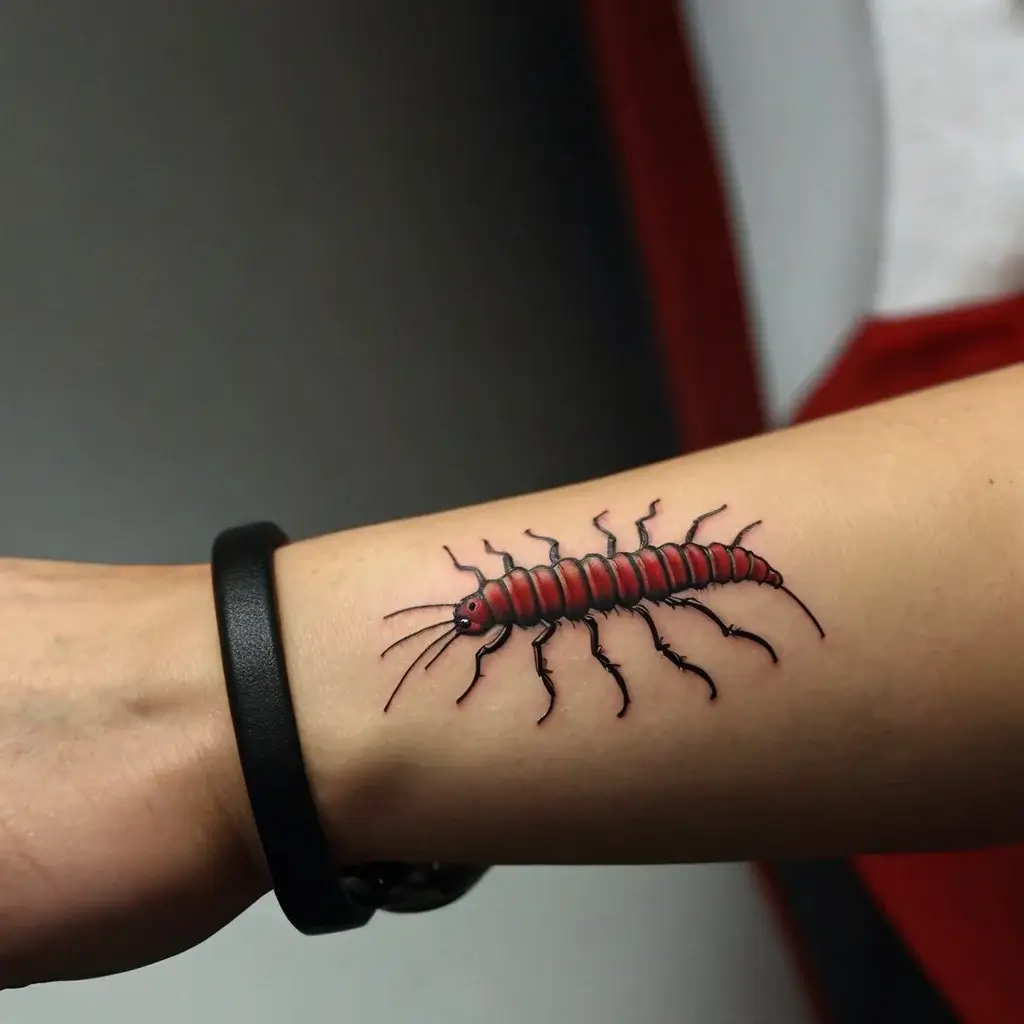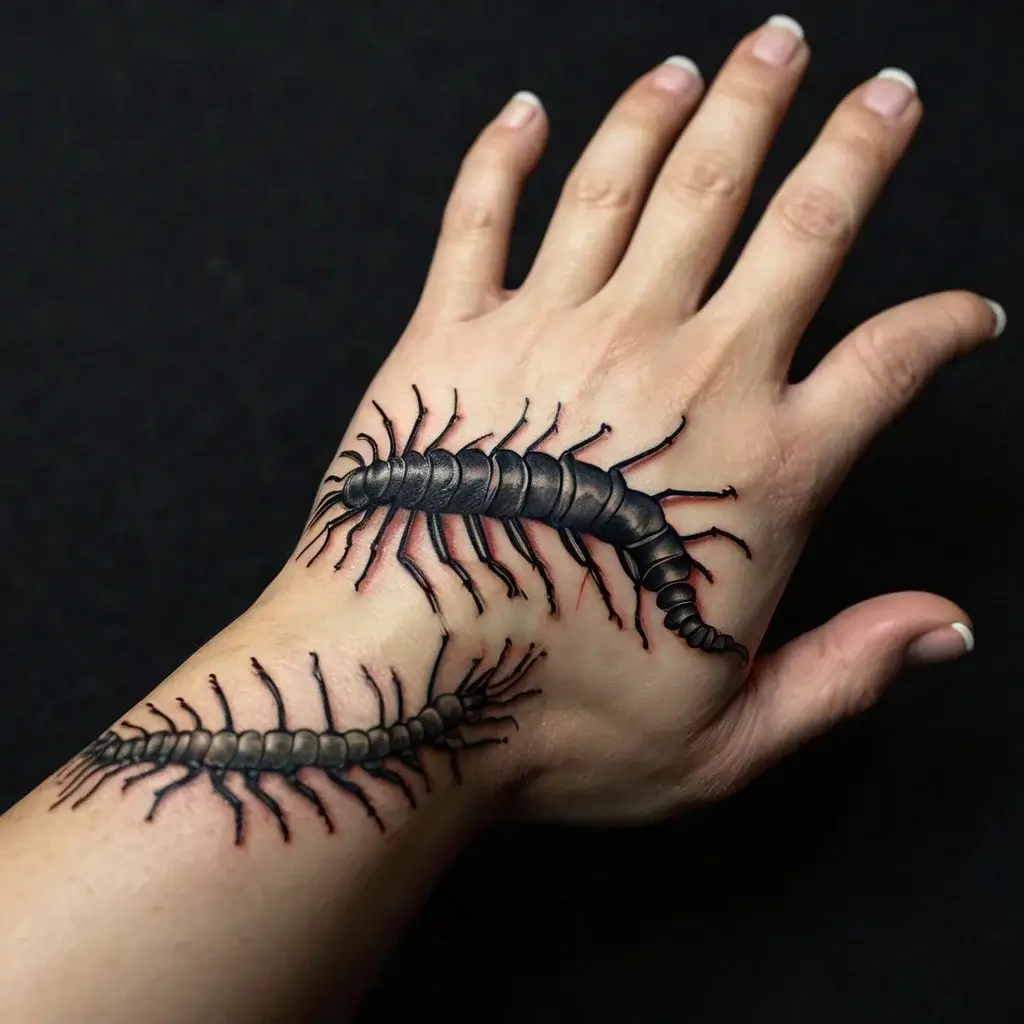Centipede tattoos aren’t just for show—they pack a punch when it comes to meaning. Across different cultures, they stand for toughness, protection, and change. If you’ve been through hard times and come out stronger, this might be the perfect symbol for you.
What’s cool is how these tattoos connect to old traditions. Some see them as a shield against bad luck, while others view them as a mark of resilience. Funny how a creature most people shy away from can carry such powerful messages, right? It’s proof that meaning is everywhere—you just have to look for it.
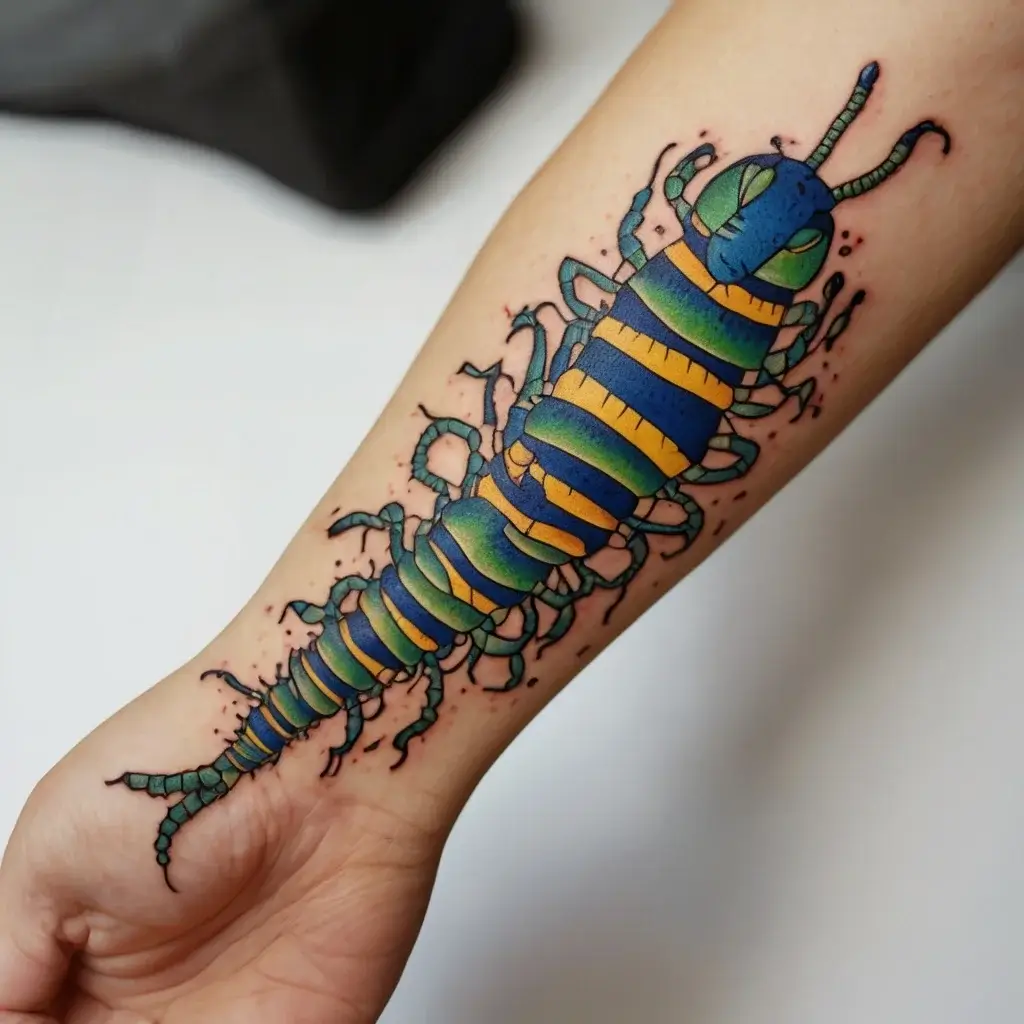
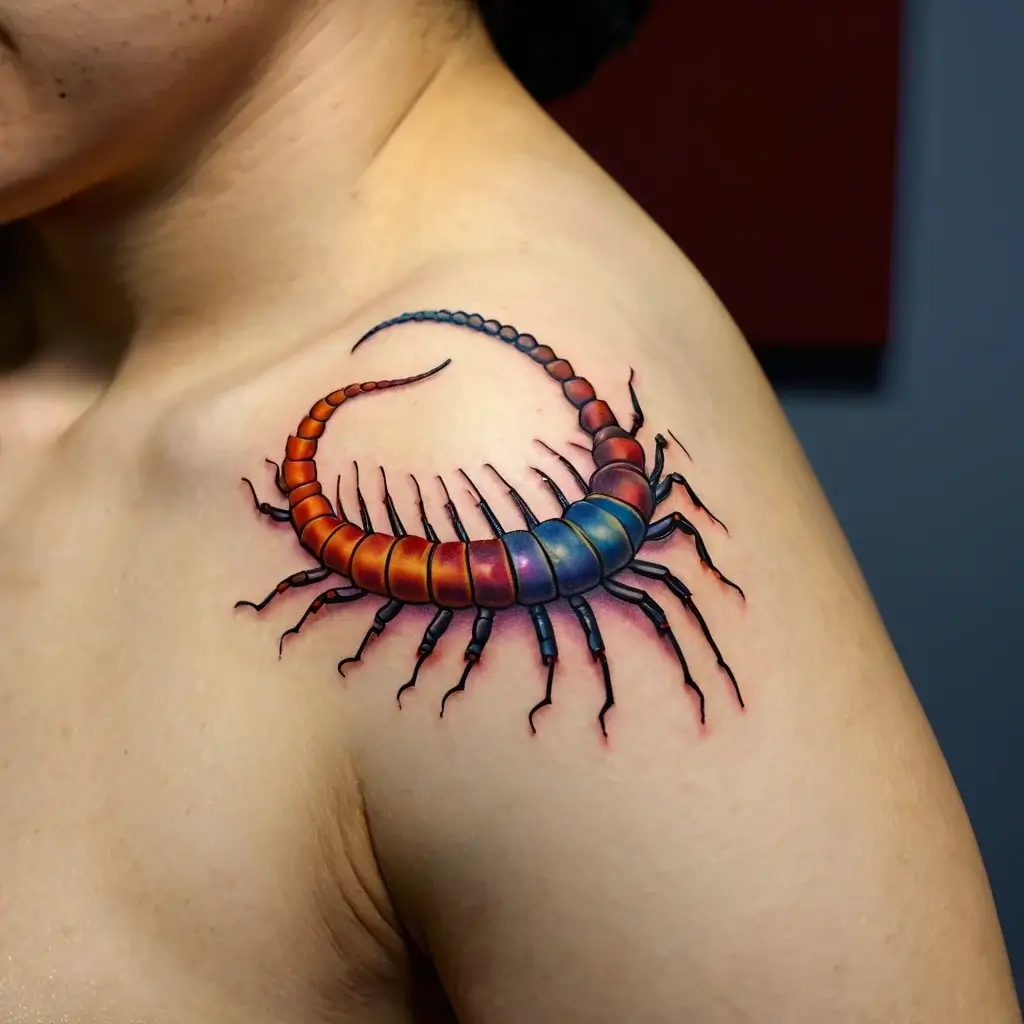
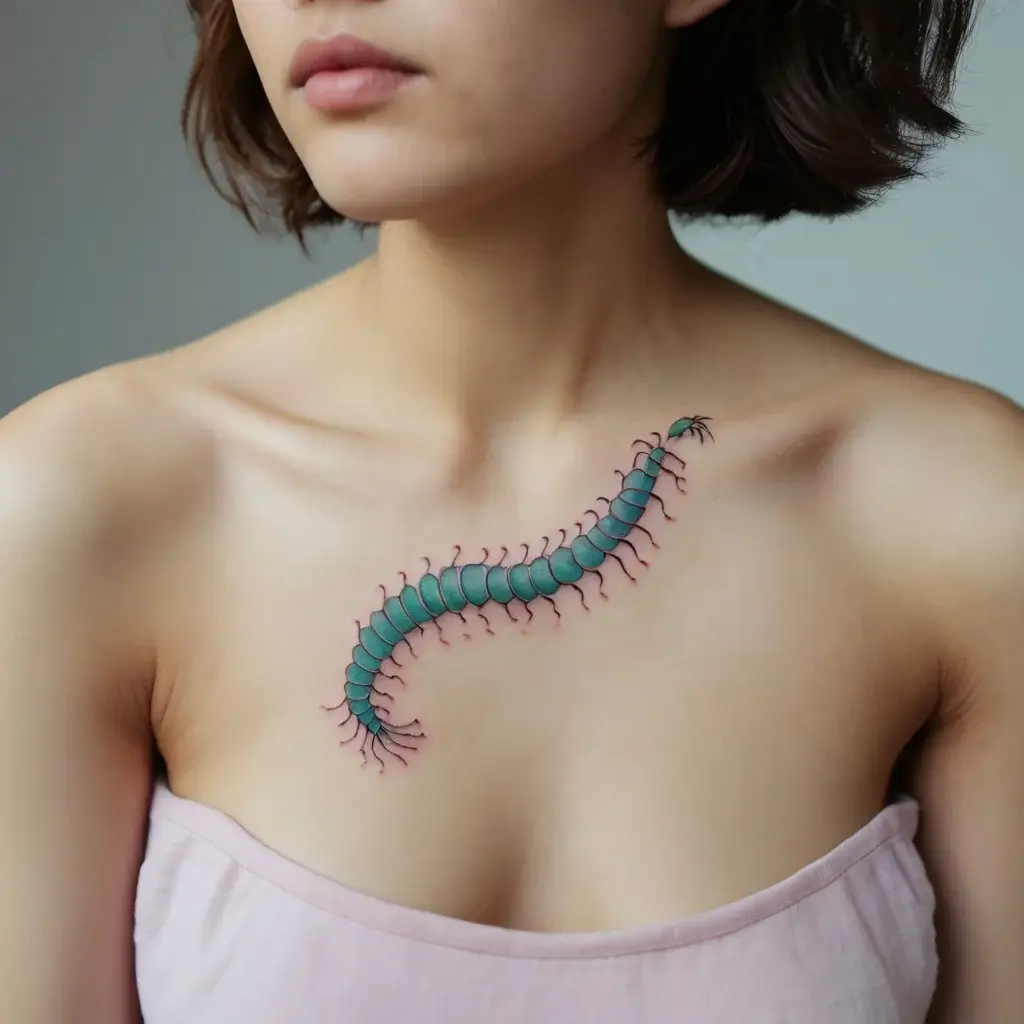
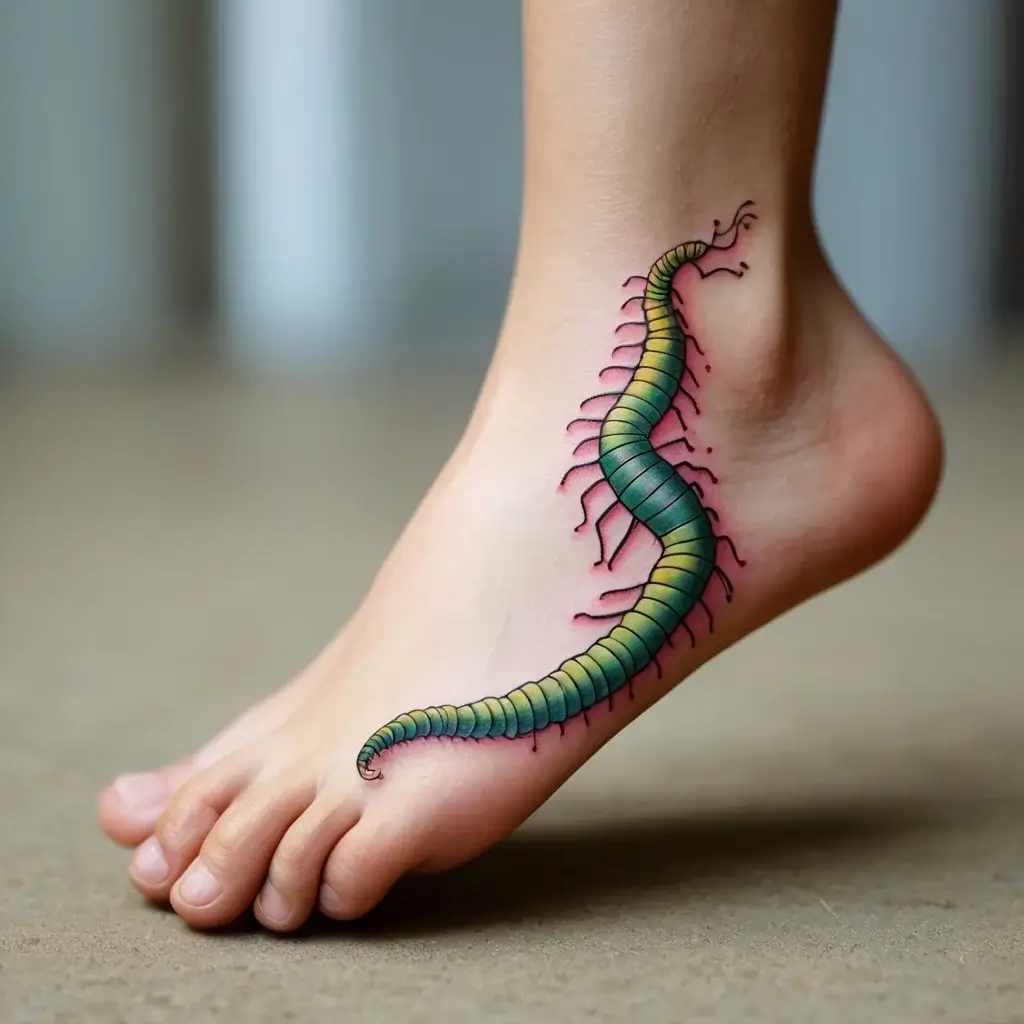
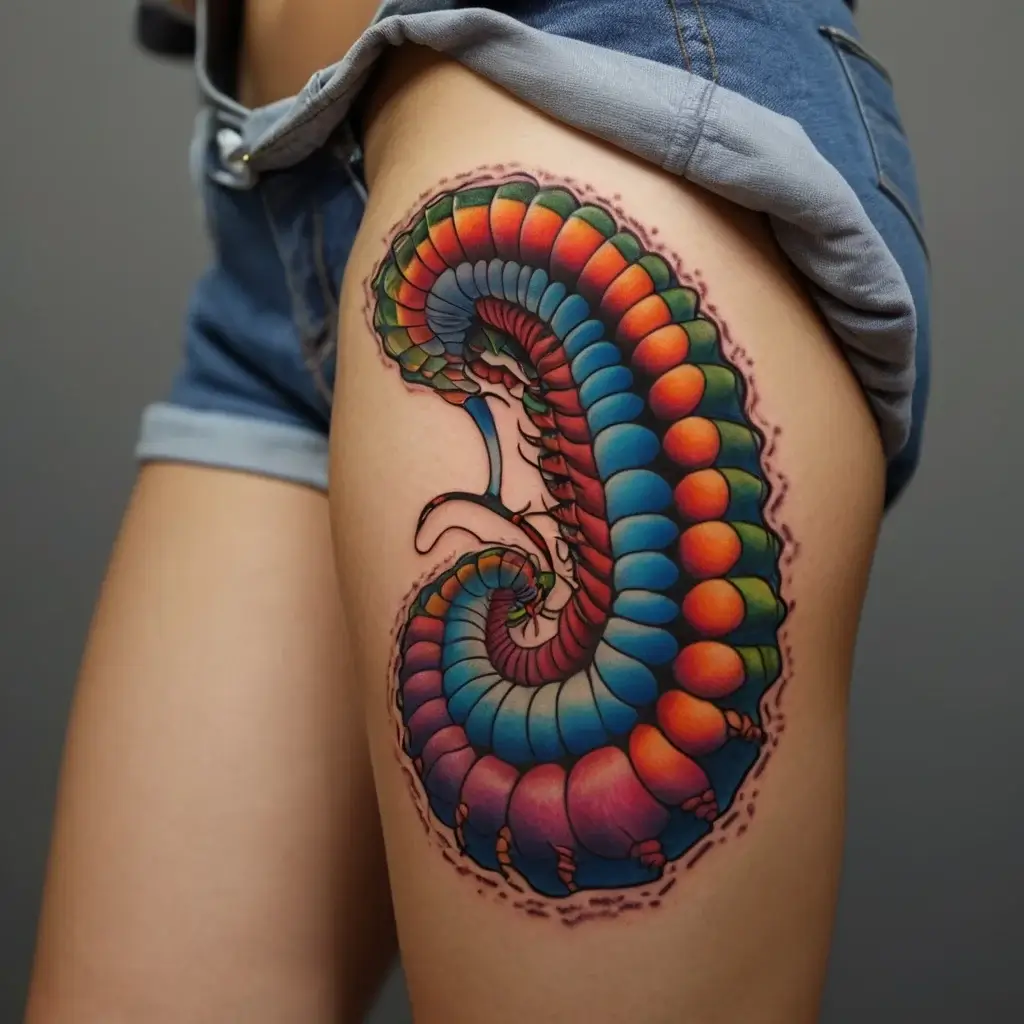
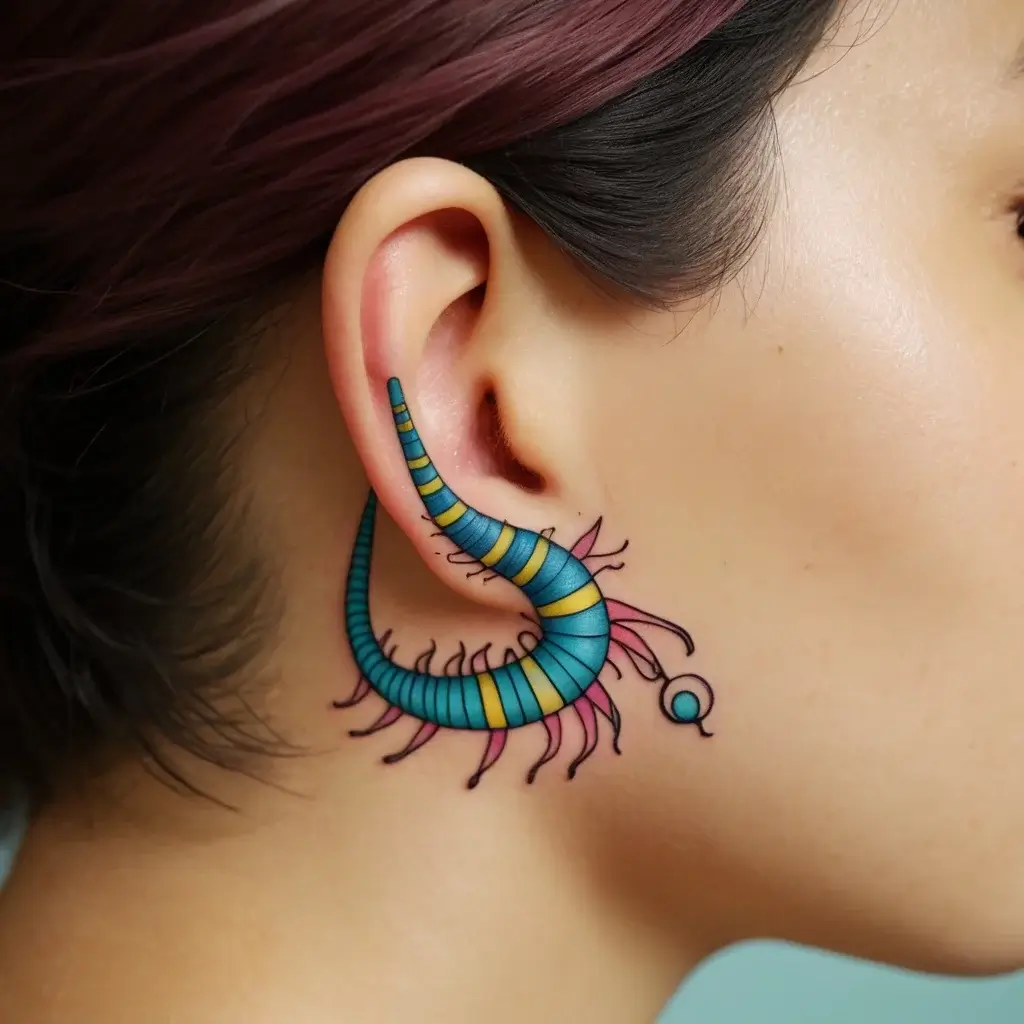
Historical Roots of Japanese Centipede Tattoos
Japan’s rich culture often brings nature into its stories and beliefs. The centipede, or mukade, is one creature that stands out. It carries deep meanings and is respected in traditional tales and art.
Traditional Beliefs and Myths Surrounding Centipedes in Japan
In Japanese folklore, the centipede is a powerful and protective figure, though it also brings fear. Take the tale of the giant centipede of Mount Mikami. This beast was so fierce that even dragons kept their distance. Such stories show the centipede as a guardian of sacred places. They tell us that this creature is not just a simple bug but a symbol of strength and protection.
Centipedes are seen as strategic and precise. These traits are admired in warriors and leaders. Because of this, the centipede is more than just a part of nature; it’s a symbol of tactical skill and a defender against evil.
Influence on Art and Tattoos
This mix of respect and fear naturally made its way into Japanese art, including tattoos. In the tattoo world, the centipede stands for protection, strength, and the power to keep bad spirits away. Tattoo lovers and artists pick this design for its deep meaning and stunning look.
Centipede tattoos often show the creature moving with its many legs, which can represent control and adaptability. The designs might also include softer elements like cherry blossoms or waves. This contrast shows the harshness of the centipede against the beauty of nature. It highlights the depth and thought behind Japanese art.

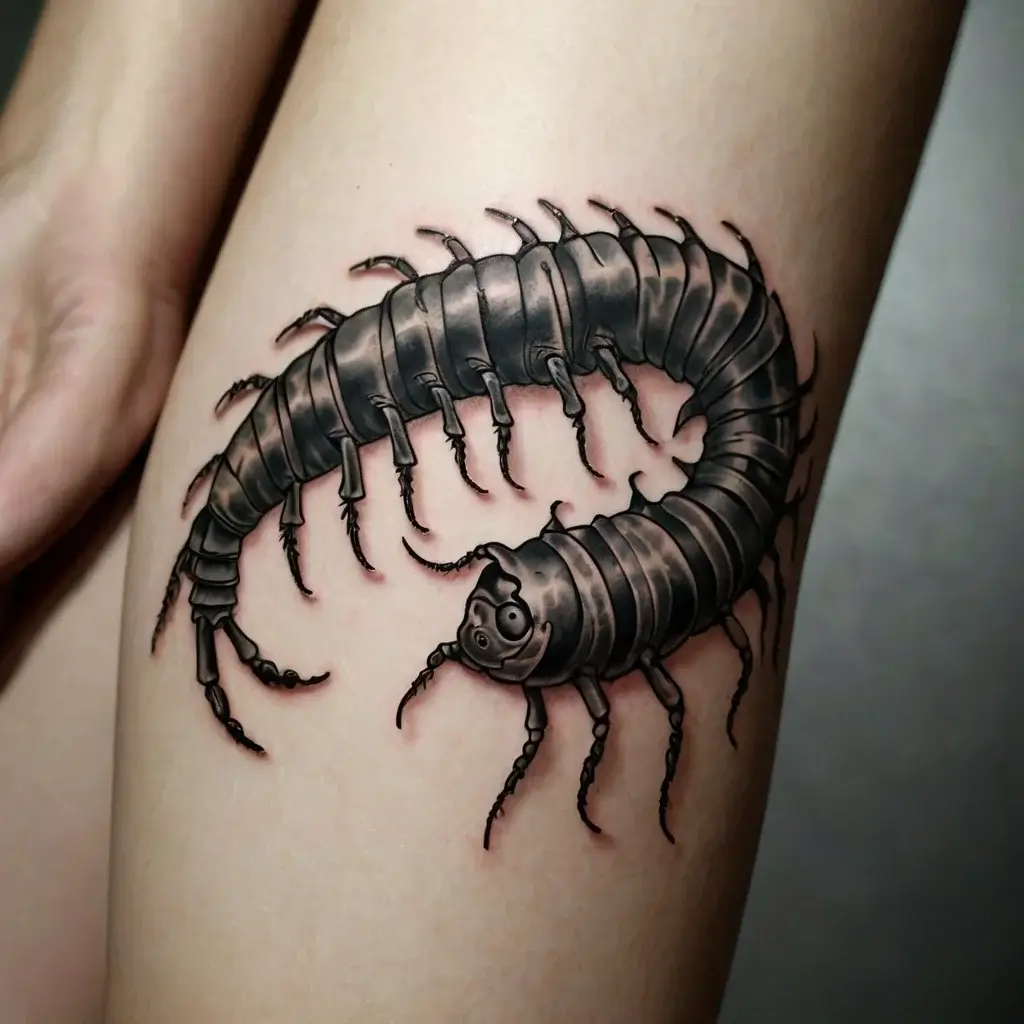
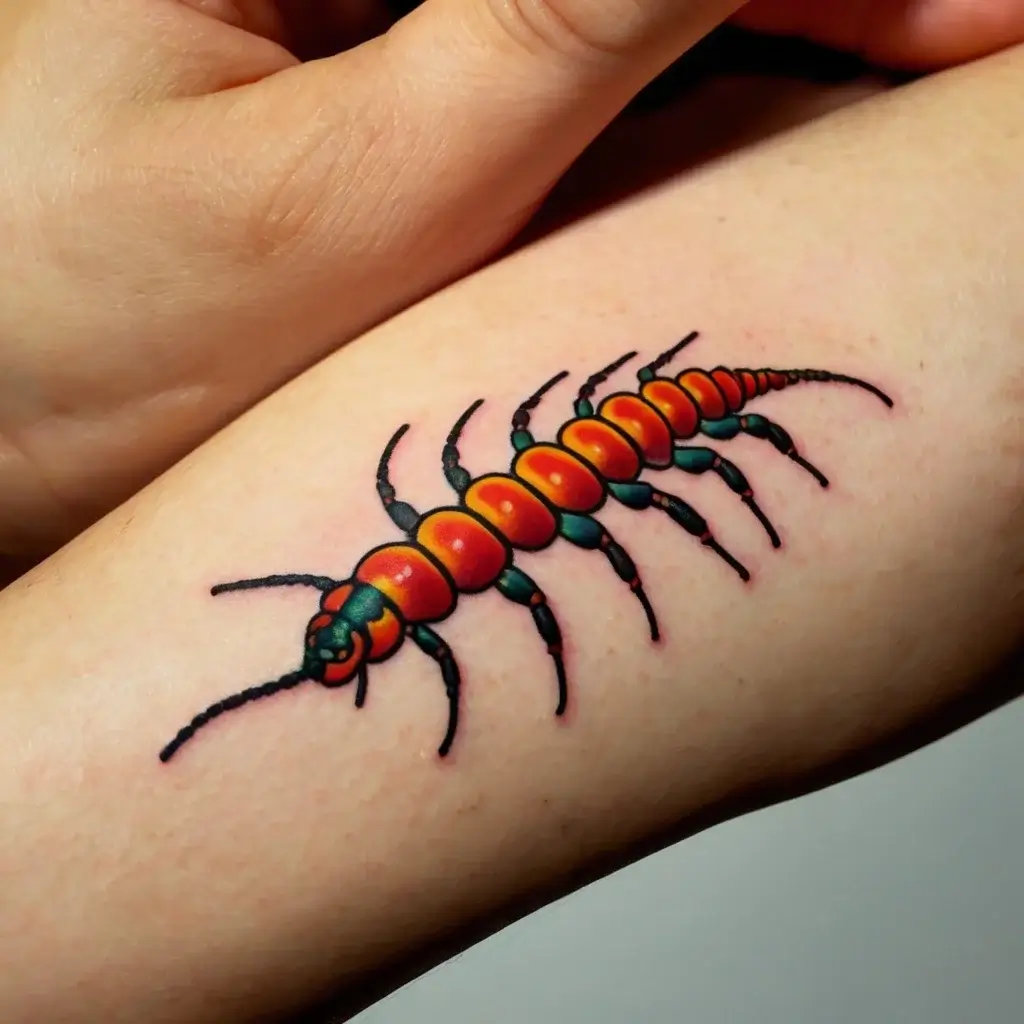

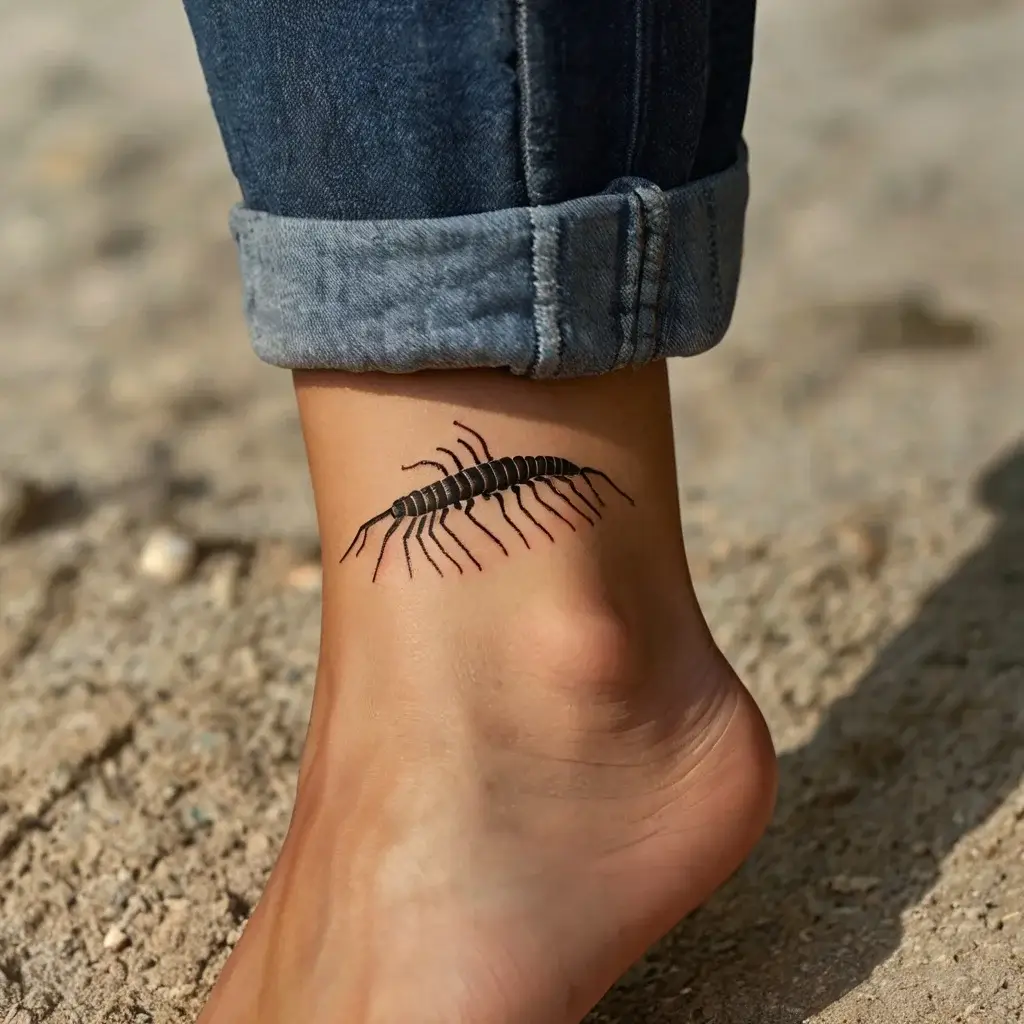
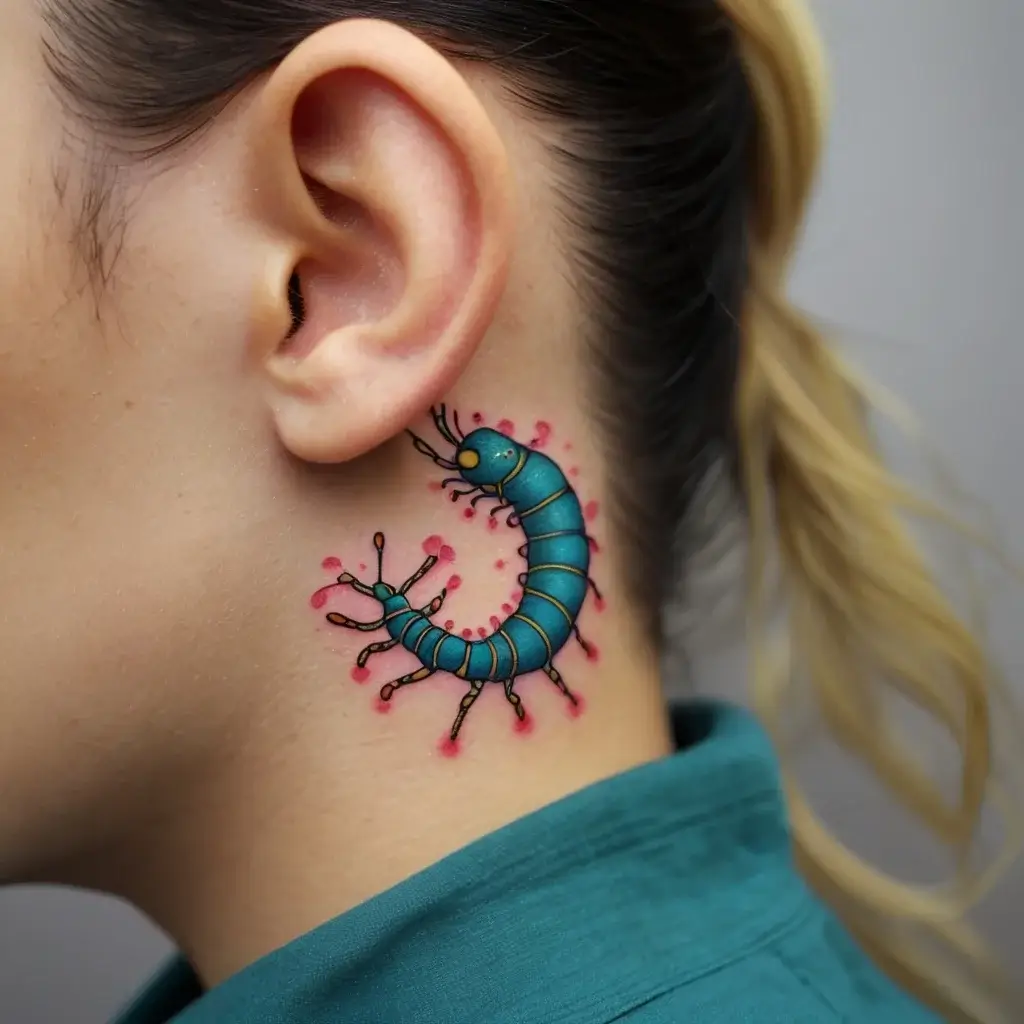
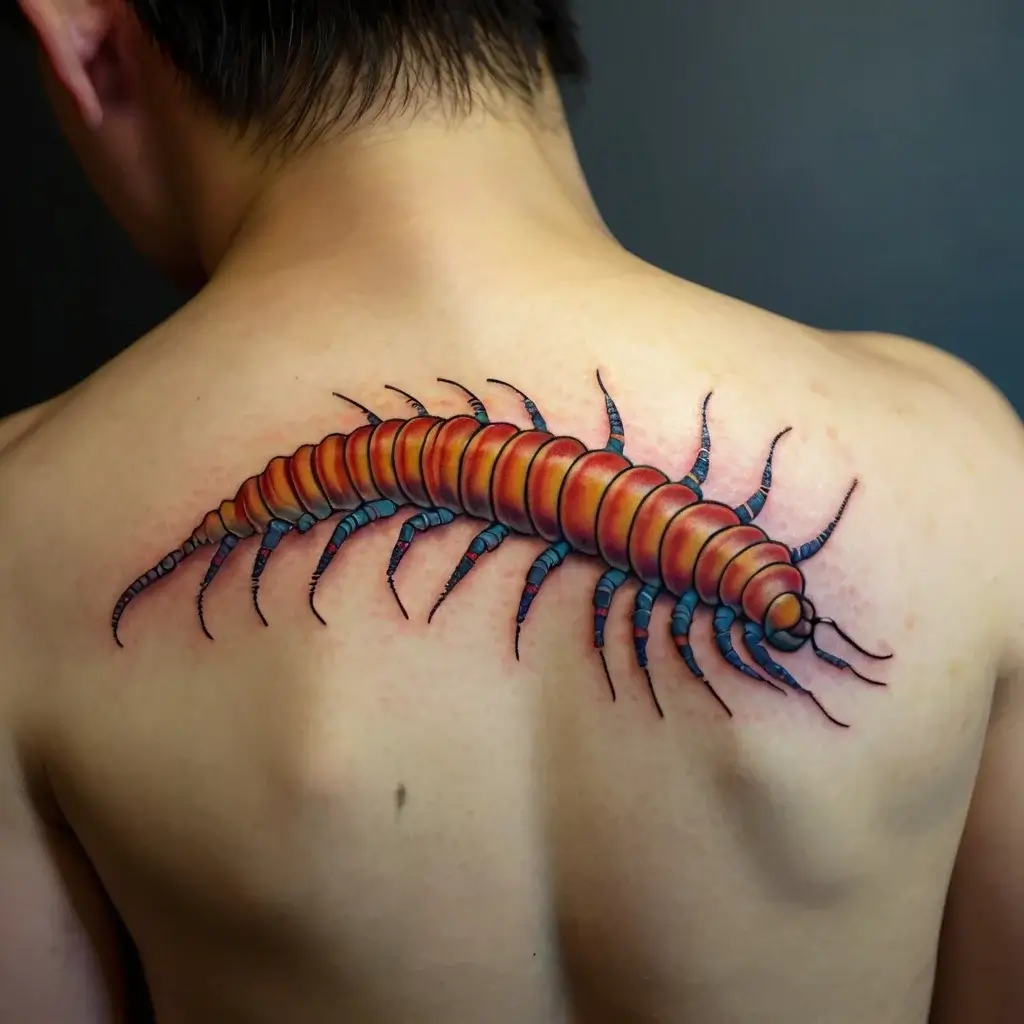
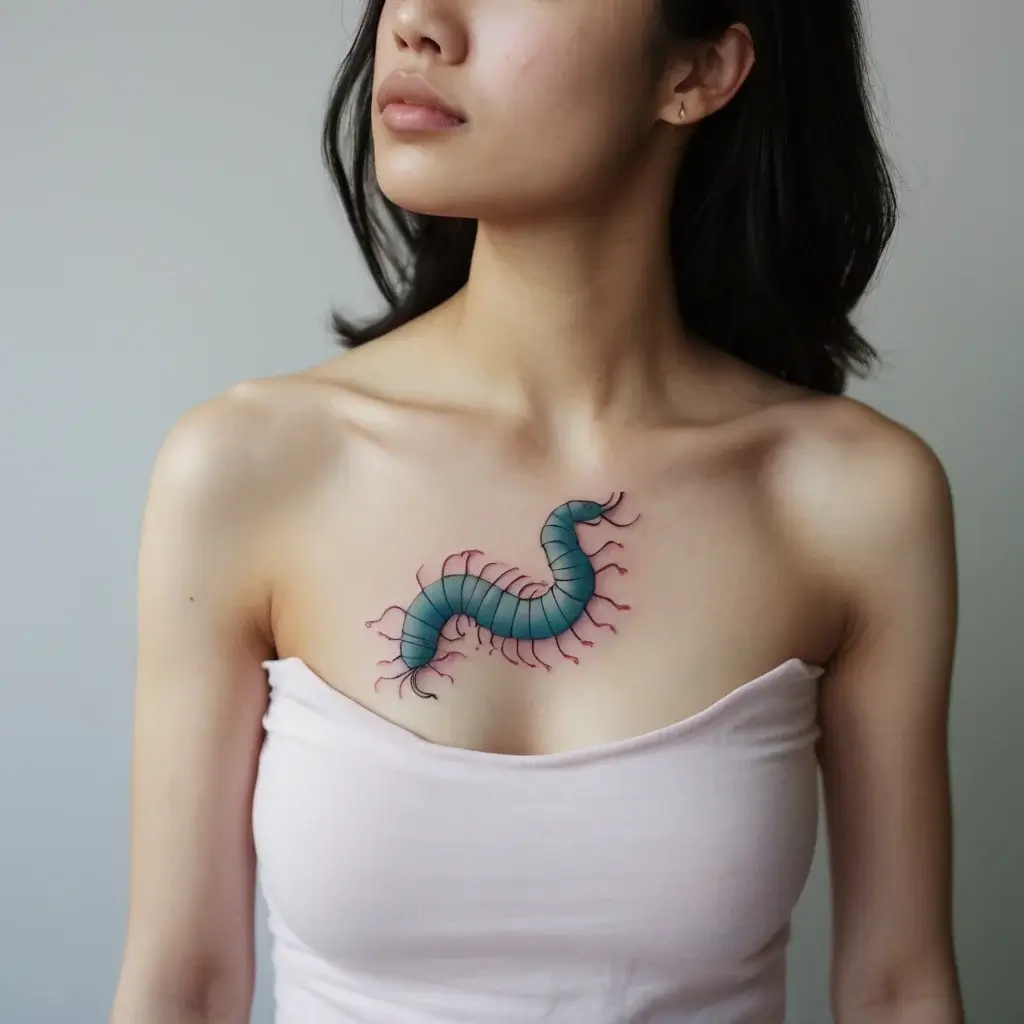
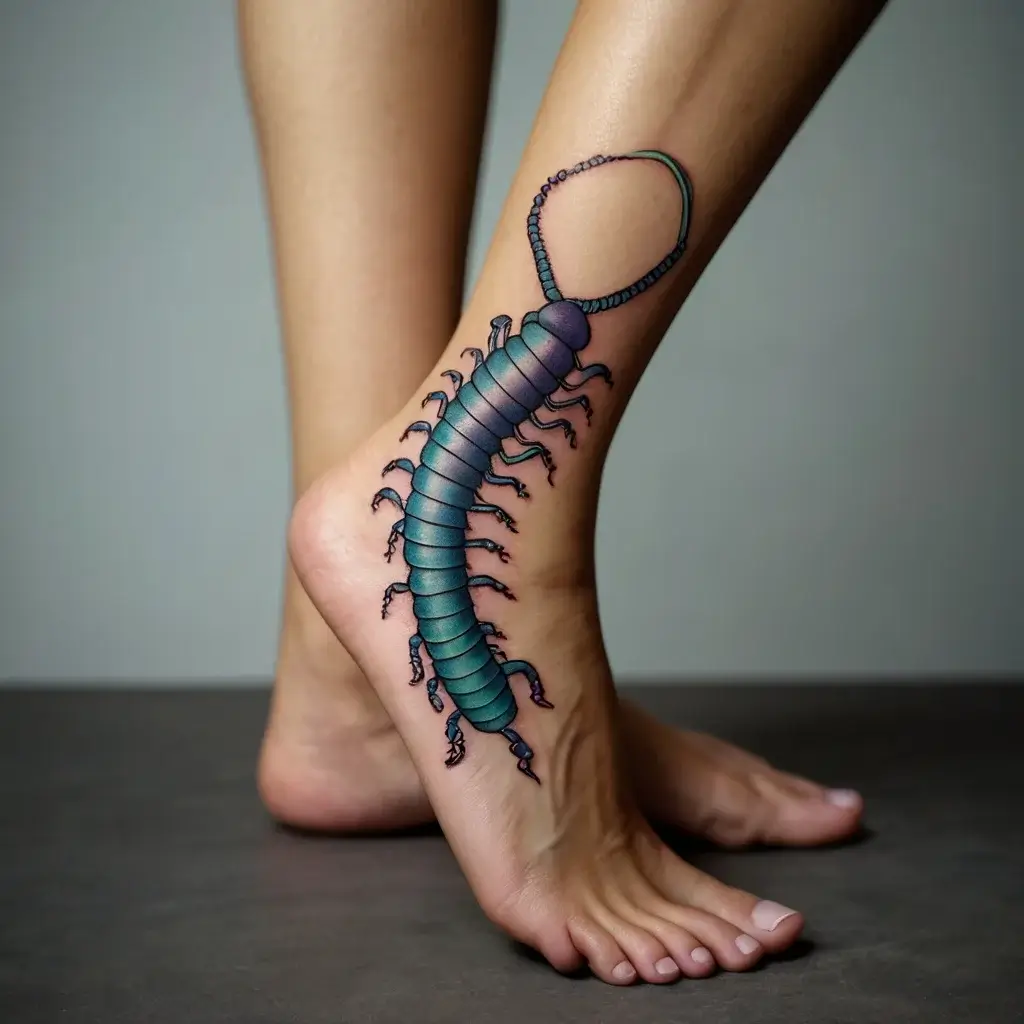

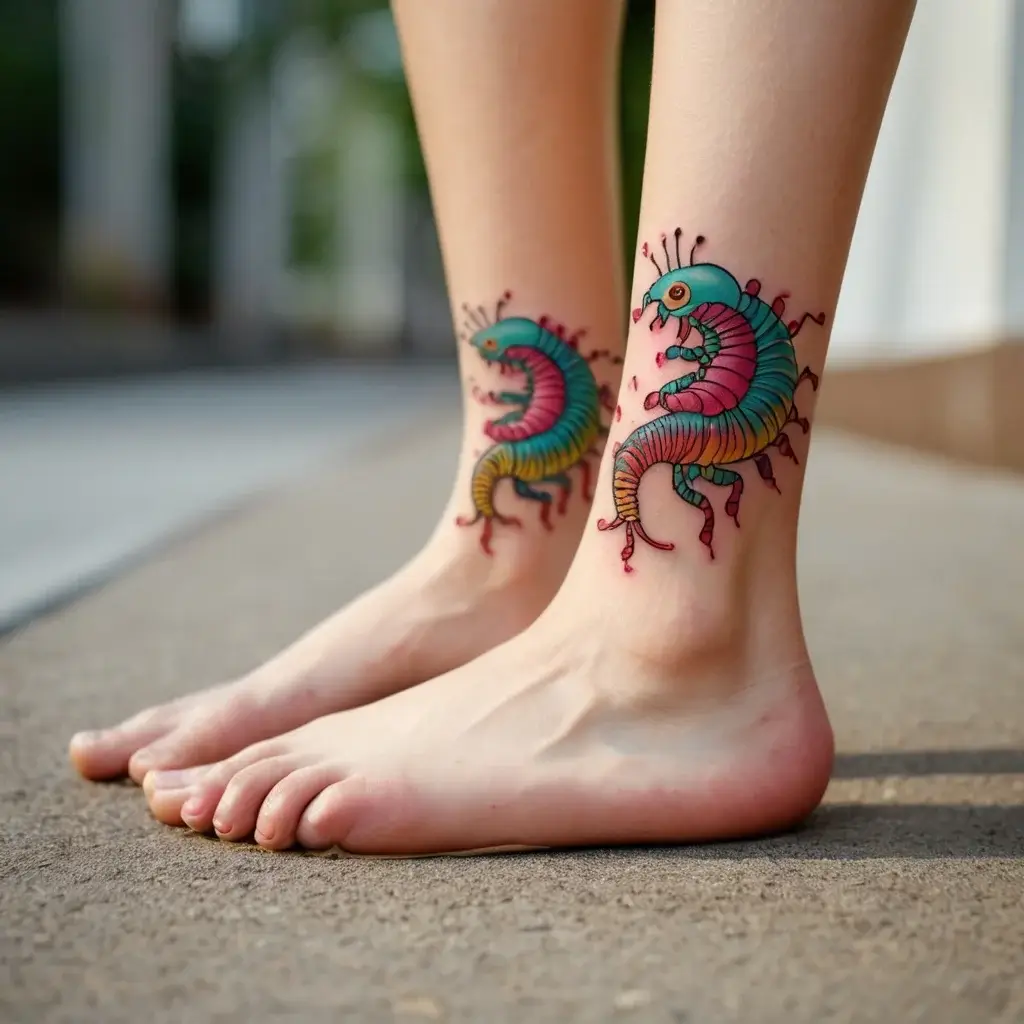
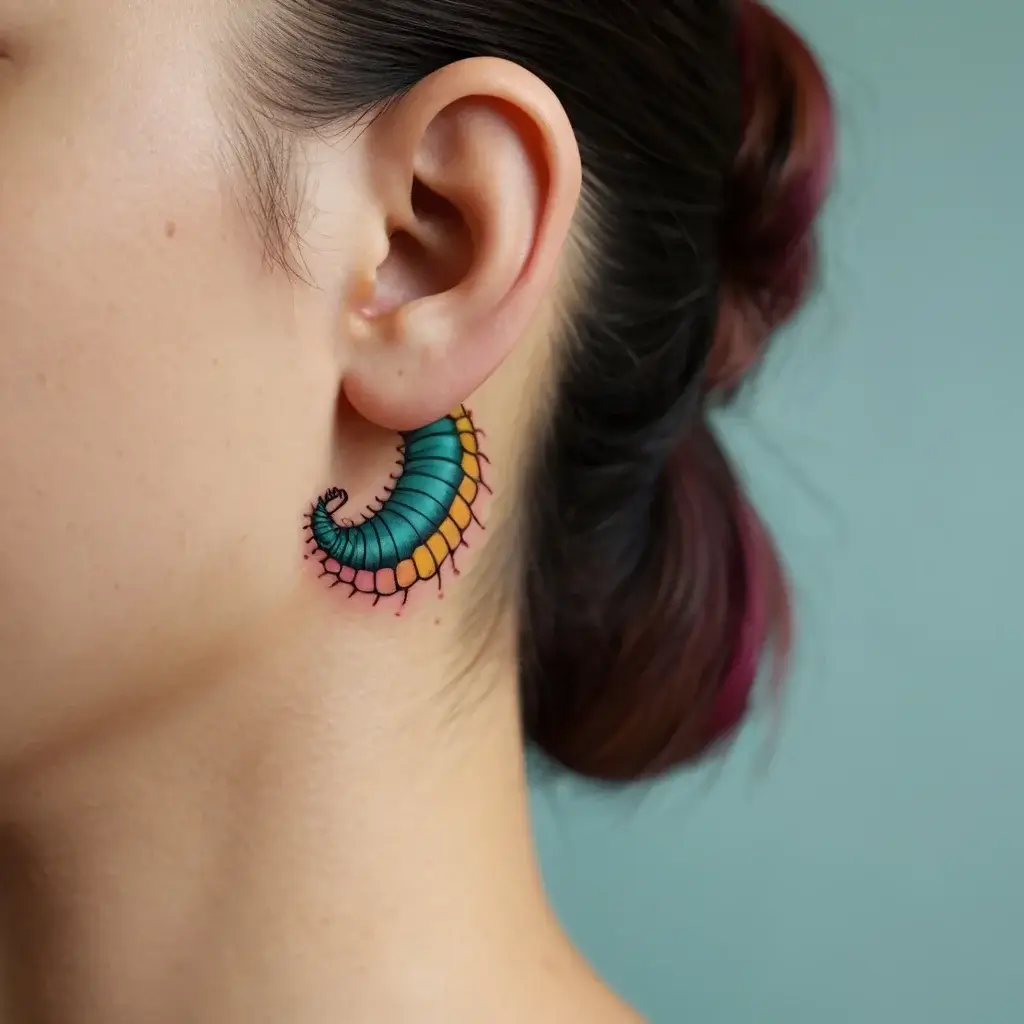
Symbolic Meanings of Centipede Tattoos
Japanese centipede tattoos have a lot of meaning. They’re not just for looks; they symbolize protection, strength, and smart strategy, which are big deals in Japanese culture.
Exploration of What the Centipede Symbolizes in Japanese Culture
In Japan, the centipede, or mukade, stands for both protection and strength. This comes from many old stories where centipedes guard sacred spots and fight off bigger threats, even dragons. They’re also seen as smart fighters. The way they move quickly and smoothly shows the same skills that great warriors and thinkers are praised for. That’s why people who feel connected to these qualities might choose a centipede tattoo. It’s like wearing a badge that says you’re tough and smart.
Comparison with Centipede Symbolism in Other Cultures
The centipede is seen differently around the world. For example, some Native American tribes see the centipede as a protector against bad vibes. But in other places, people might link centipedes with sneakiness because they creep around quietly and come out at night.
When it comes to tattoos, these different views can mix together. That means you can pick a centipede tattoo that matches your story or the traits you admire. Whether it’s seen as a guardian, a clever creature, or a survivor, the centipede is a powerful choice that speaks to people in many ways.
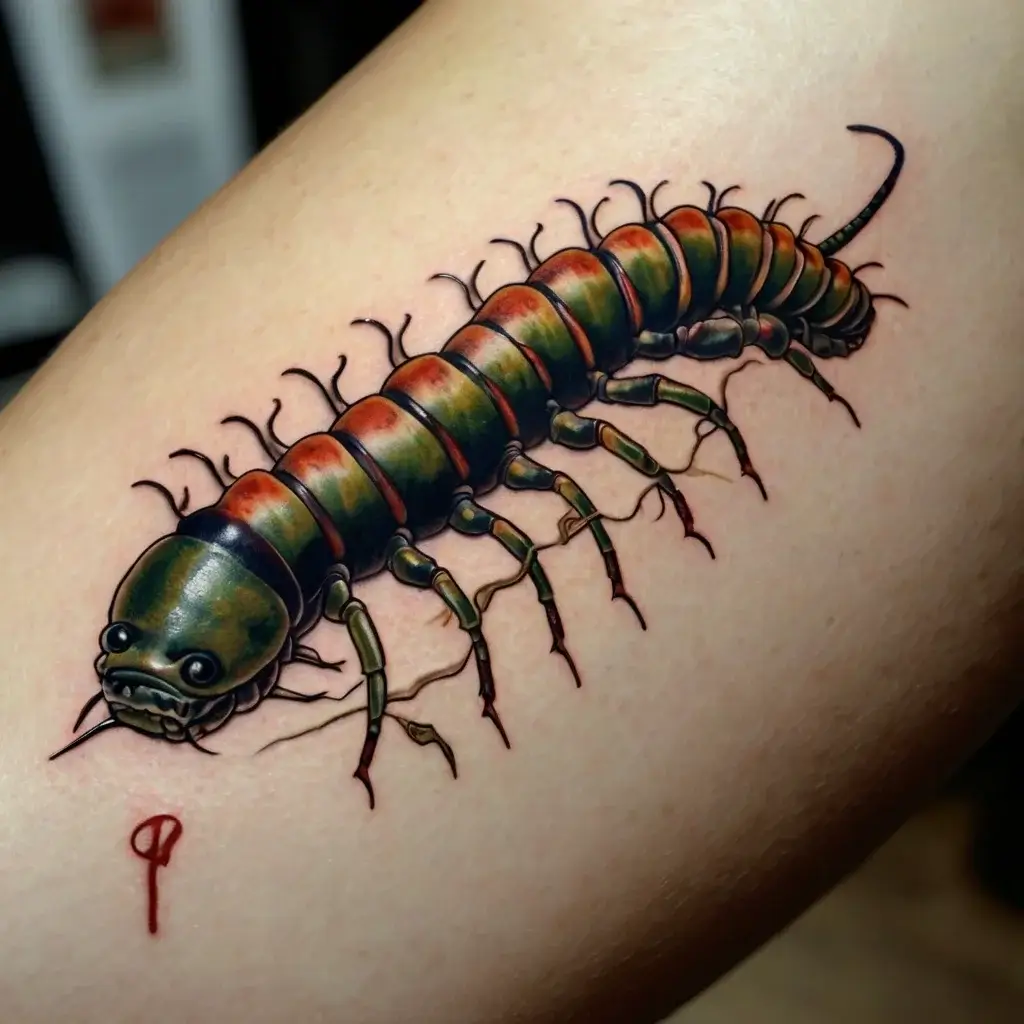
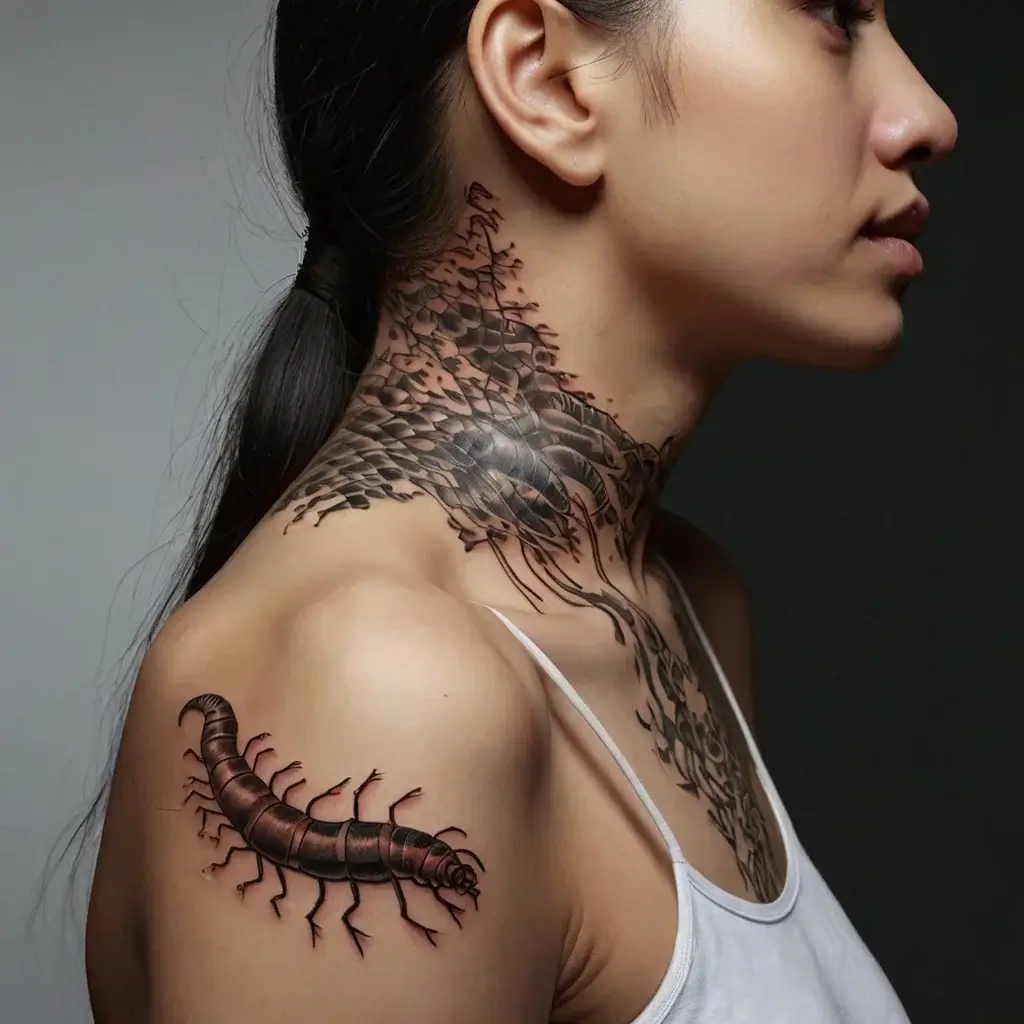

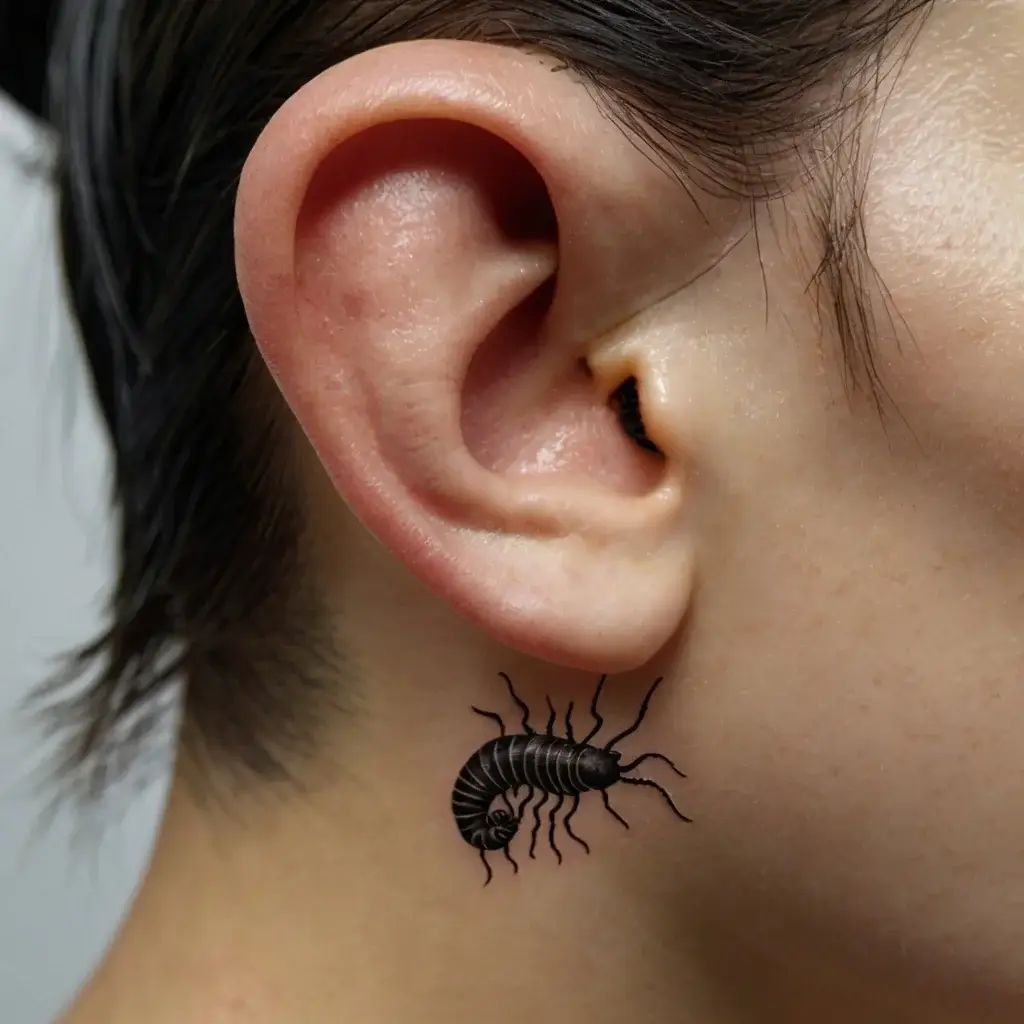
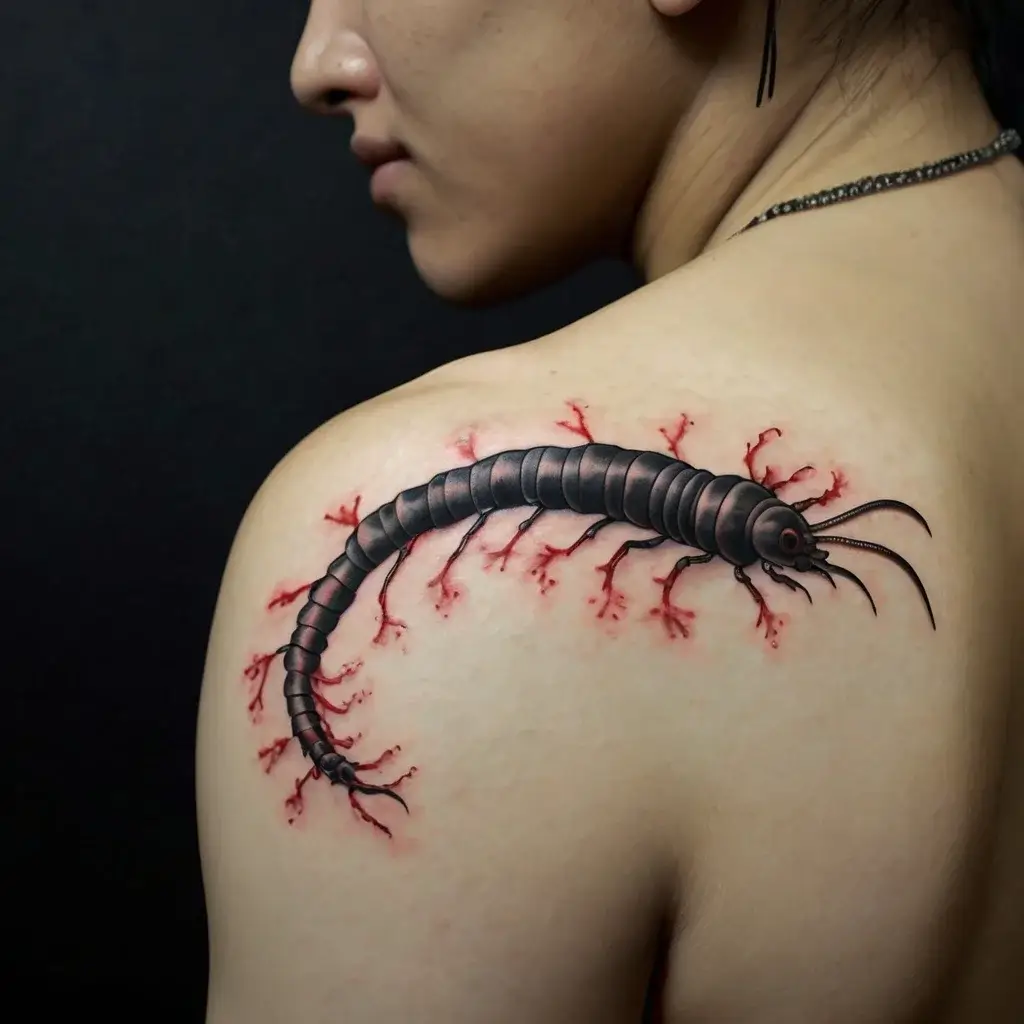

The Artistic Style of Japanese Centipede Tattoos
Japanese centipede tattoos are more than just ink on the skin; they’re a bold statement packed with cultural stories. These designs capture the essence of the centipede’s natural form and mythical power.
Description of Typical Features in the Design of Japanese Centipede Tattoos
In these tattoos, the centipede curls and twists, following the body’s own lines. This creature usually shows up with a long, segmented body and many tiny, sharp legs that look like they could move at any moment. The head is fierce, with antennae and mandibles that add to its intimidating vibe. Every part is detailed, showing off the centipede’s texture and making it seem alive on the skin.
The Interplay of Colors, Shapes, and Traditional Japanese Tattoo Techniques
Mostly, these tattoos are in black and grey, letting the detailed work shine without bright colours distracting. Sometimes, though, artists add touches of red or green to highlight the centipede’s dangerous traits, like venom.
The tattoos flow with the body’s shape, which is crucial. They look as natural as a real centipede moving across the ground. Some artists stick to the traditional hand-poking method, known as tebori.
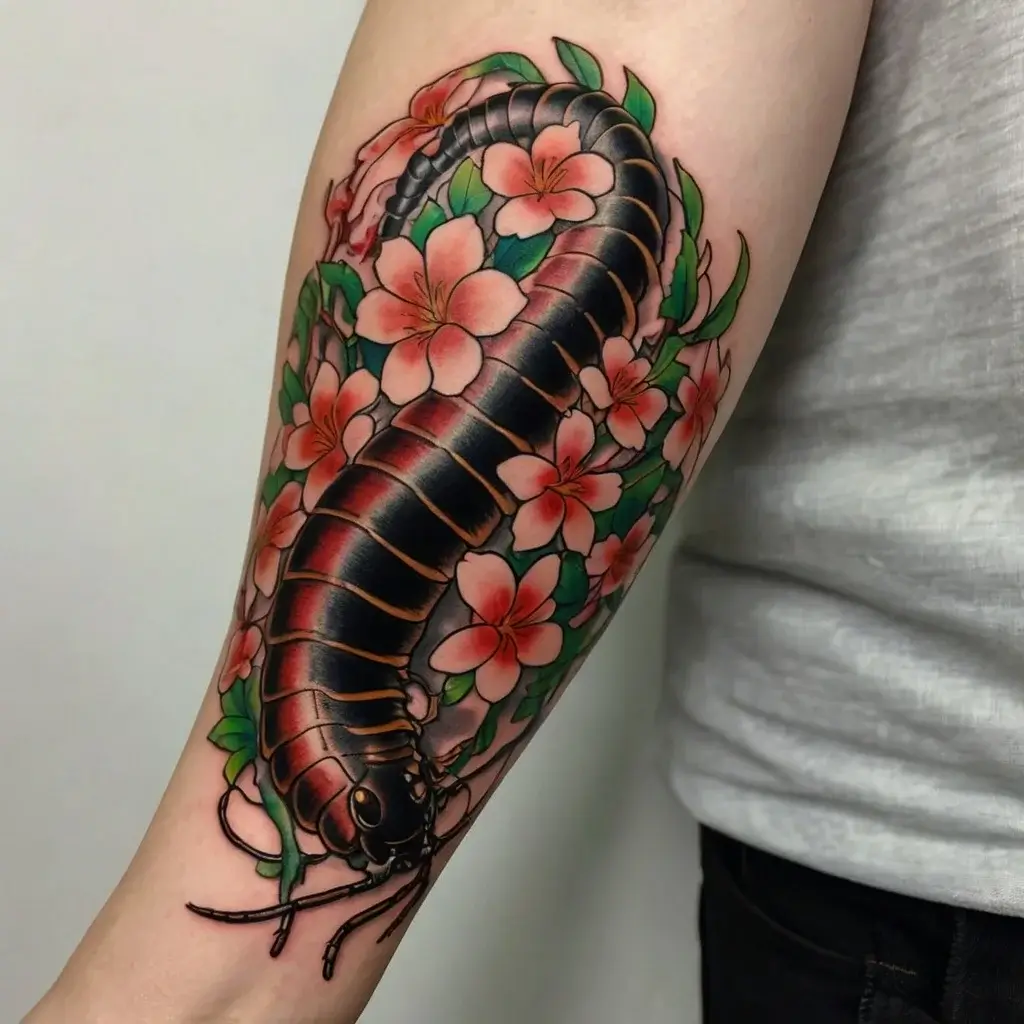
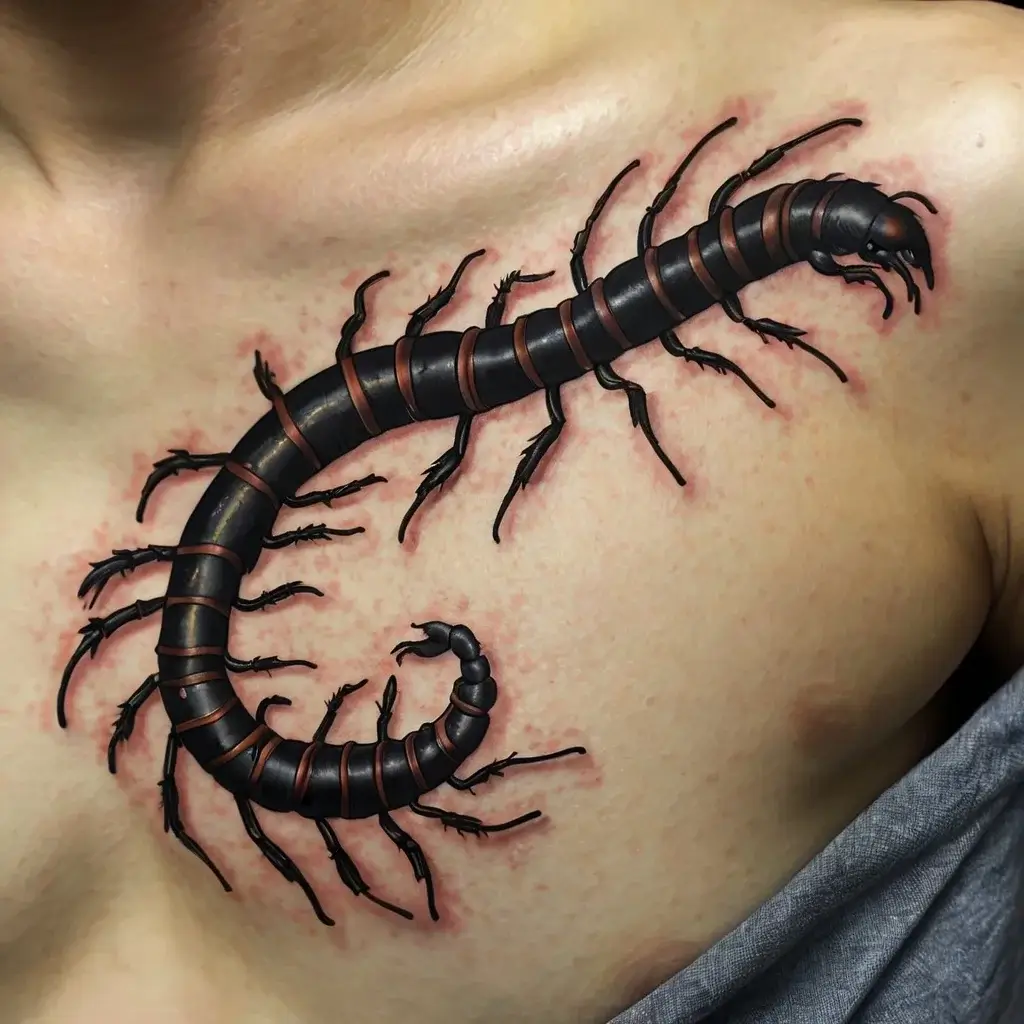
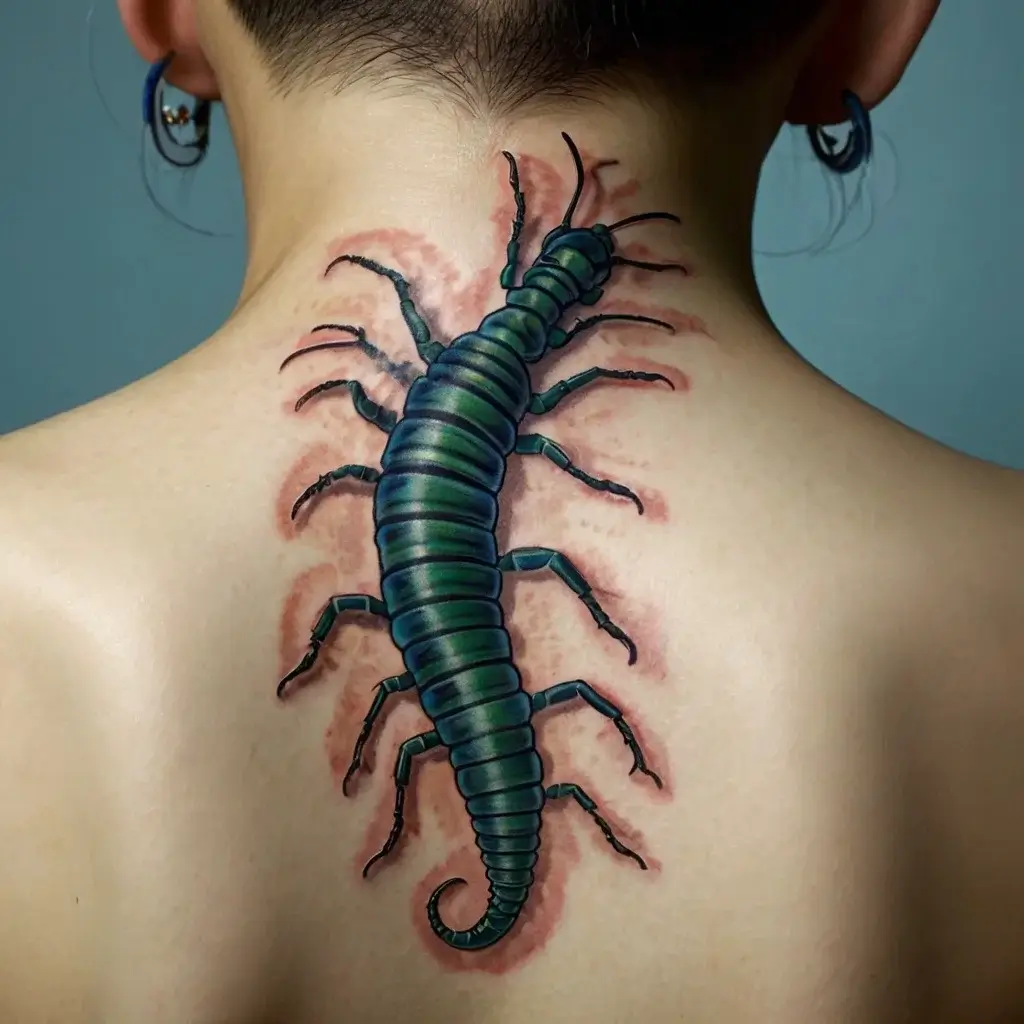

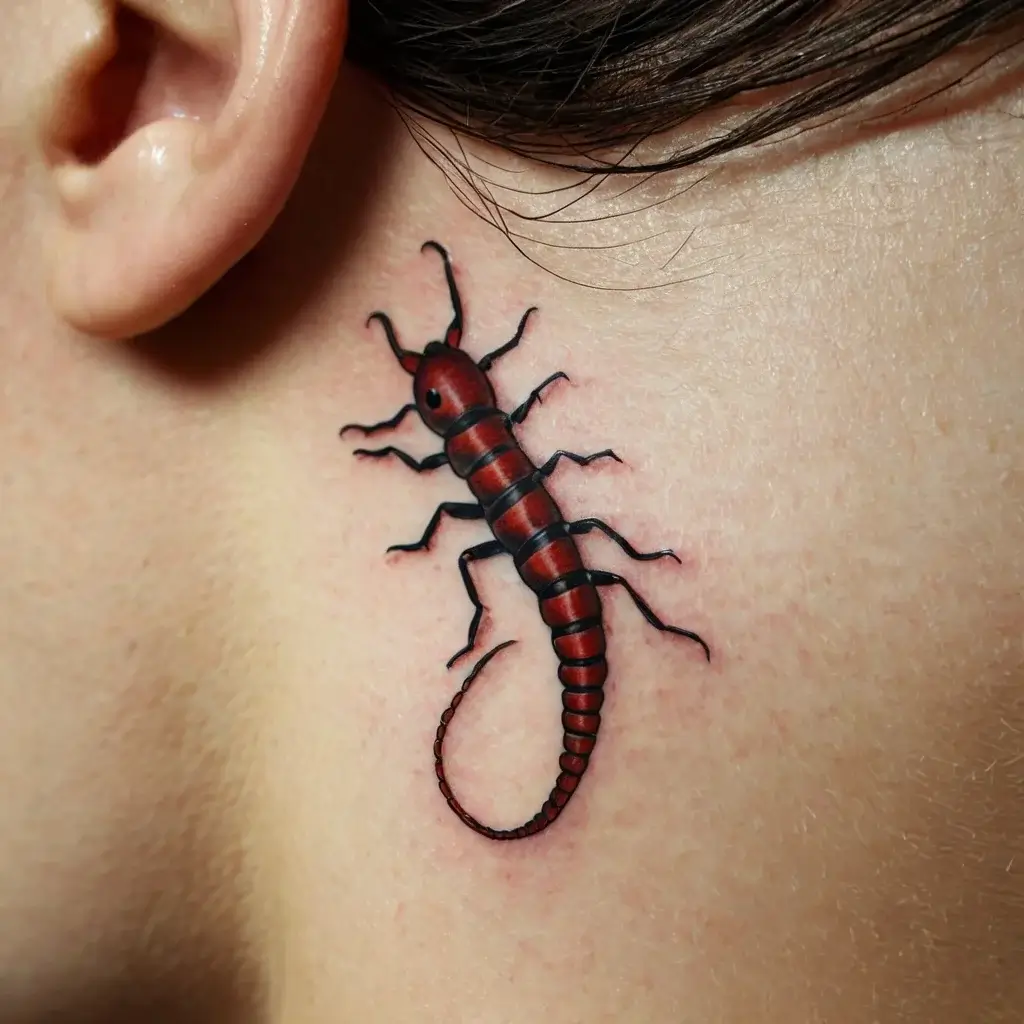
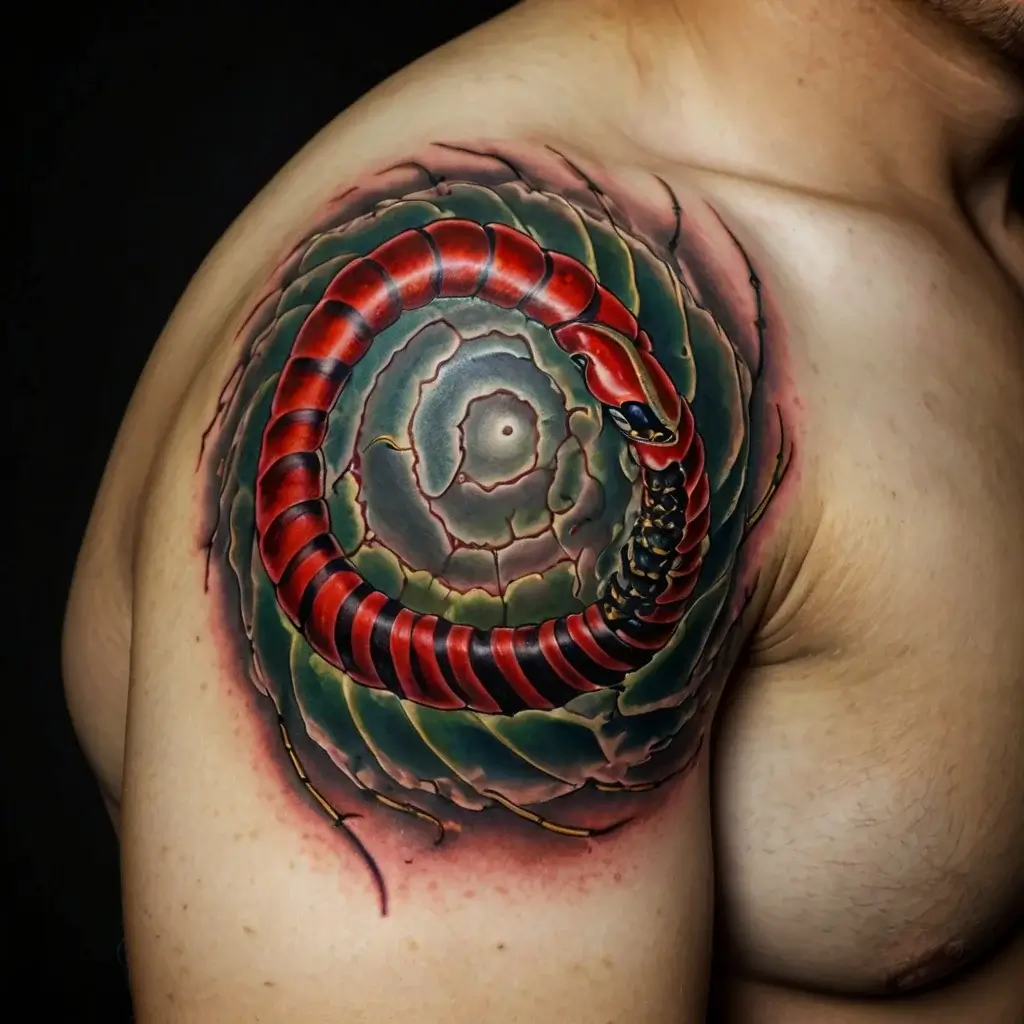
Placement and Significance
When you choose a Japanese centipede tattoo, where you place it on your body can mean just as much as the design itself. These tattoos are more than just art; they are a statement about who you are and what you believe in.
Where do People Usually Get Japanese Centipede Tattoos?
Centipede tattoos are often inked along the arms or legs. This shows off their length and mirrors the centipede’s natural movement. Placing it here can symbolize protection as if the centipede is wrapping the limb in a protective layer.
Another favourite spot is the back, where there’s plenty of space to let the tattoo unfold in all its detailed glory. Here, a centipede might be surrounded by other traditional Japanese symbols like cherry blossoms or waves, which enrich its cultural story.
How Does Tattoo Placement Change Its Meaning?
The spot you choose for your tattoo can change what it means. For instance, a centipede running up the arm can look like it’s always ready to defend its wearer, showing off strength and readiness. But one that goes down the back might feel more like a support, reinforcing the wearer’s backbone with resilience and strength.
Visibility also matters. A tattoo on the forearm or calf is out there for everyone to see. It’s a way to wear your beliefs on your sleeve—literally. But a tattoo hidden on the back is more private, holding a personal meaning that’s just for you, like a secret source of inner strength.
You may also like Three Crosses on a Hill Tattoos: Meaning, Significance & 41 Designs
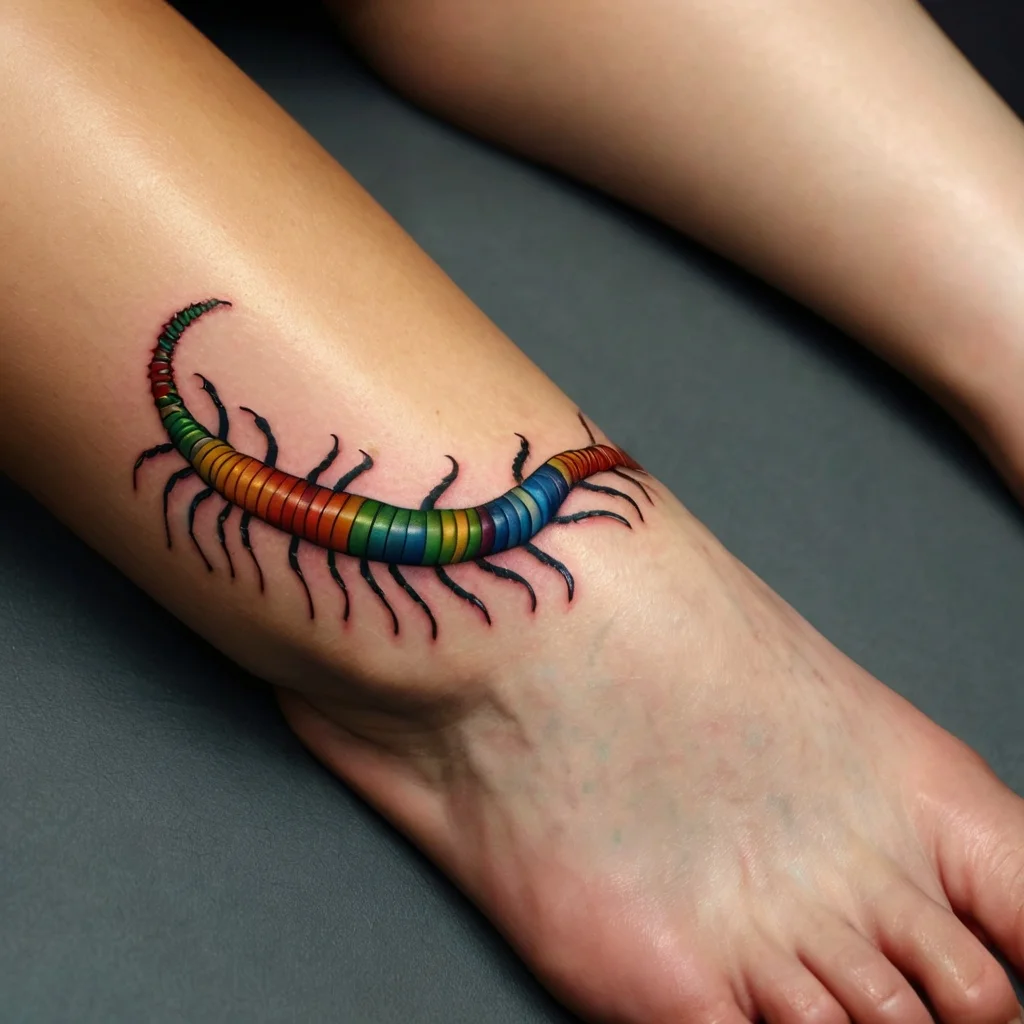
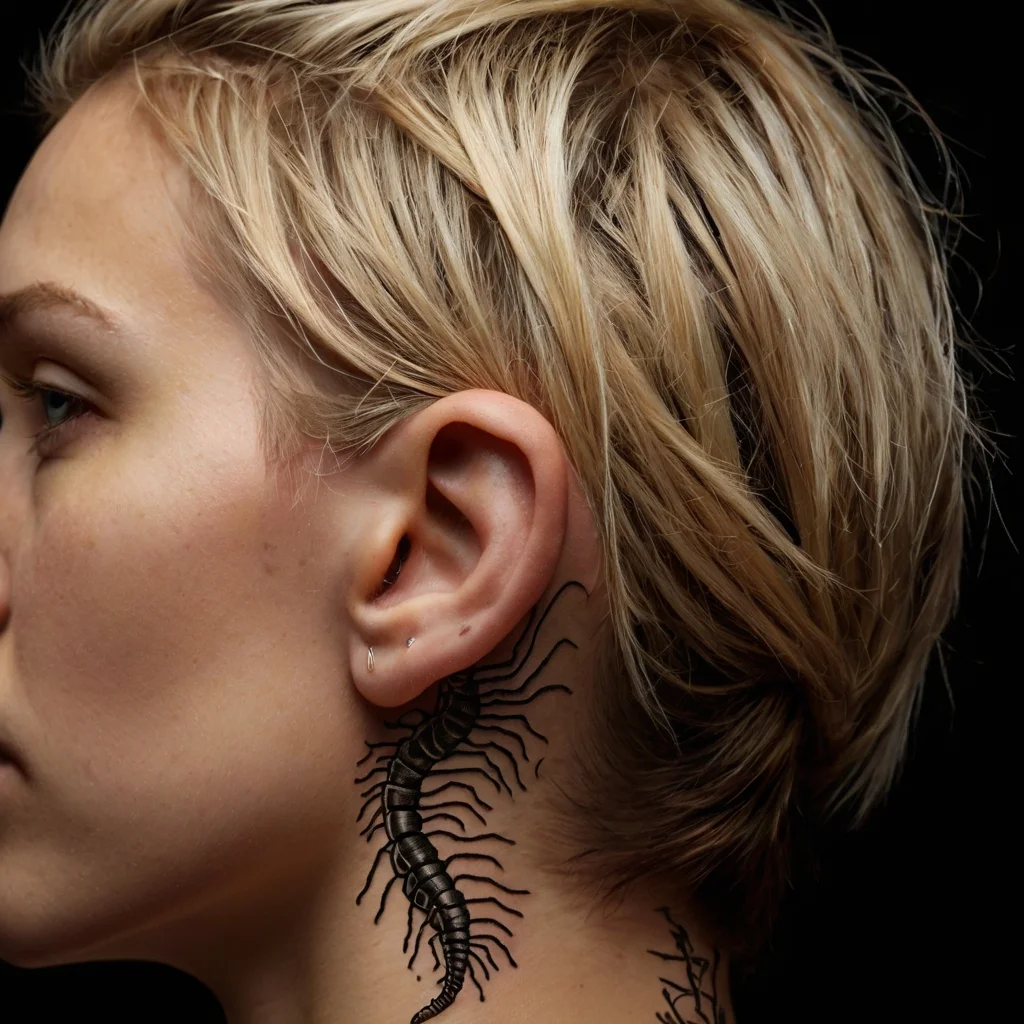
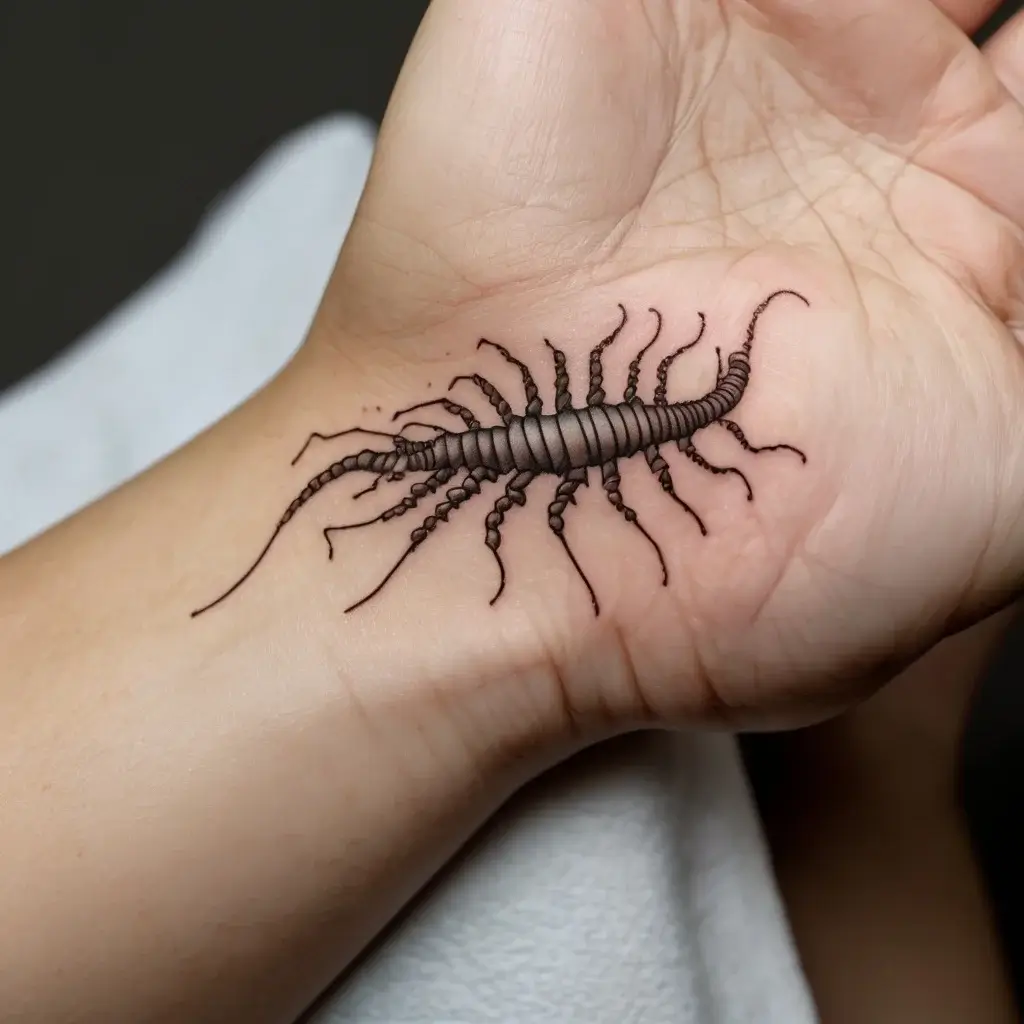
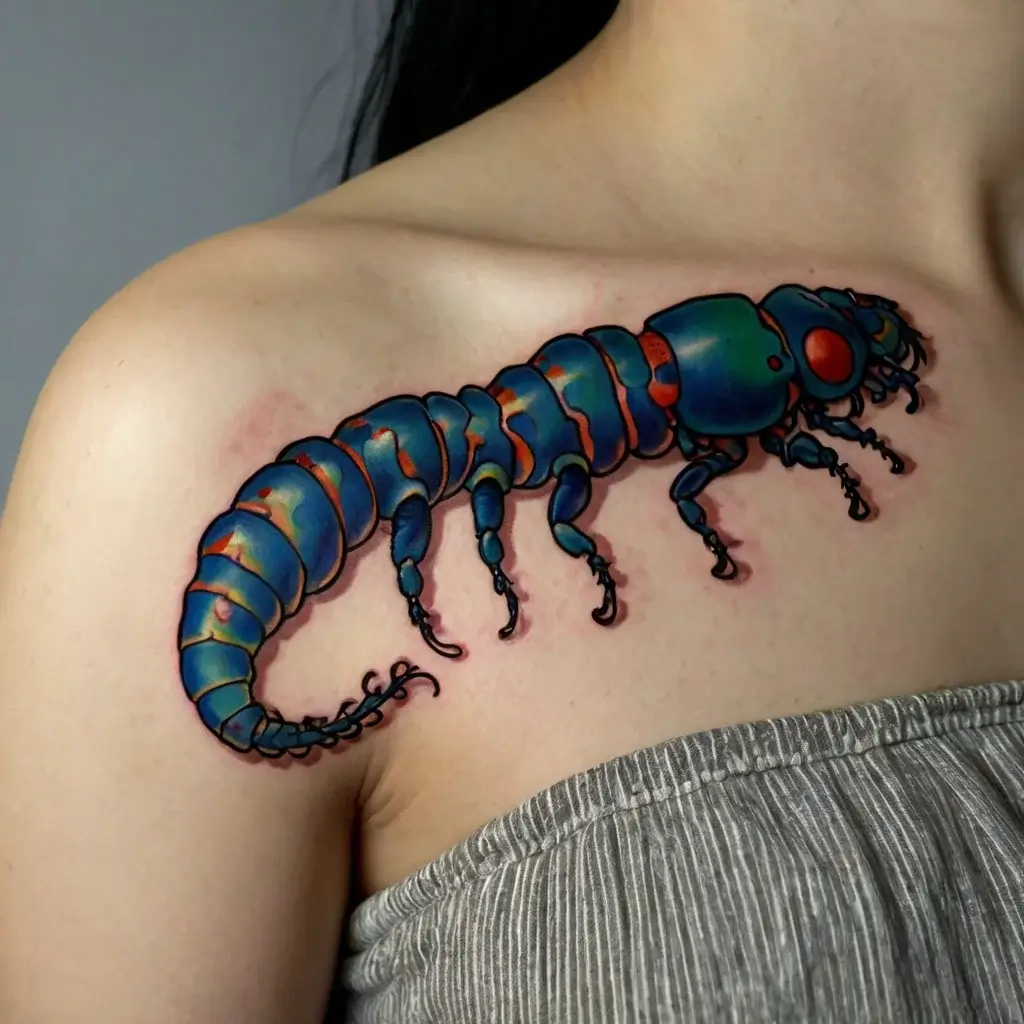
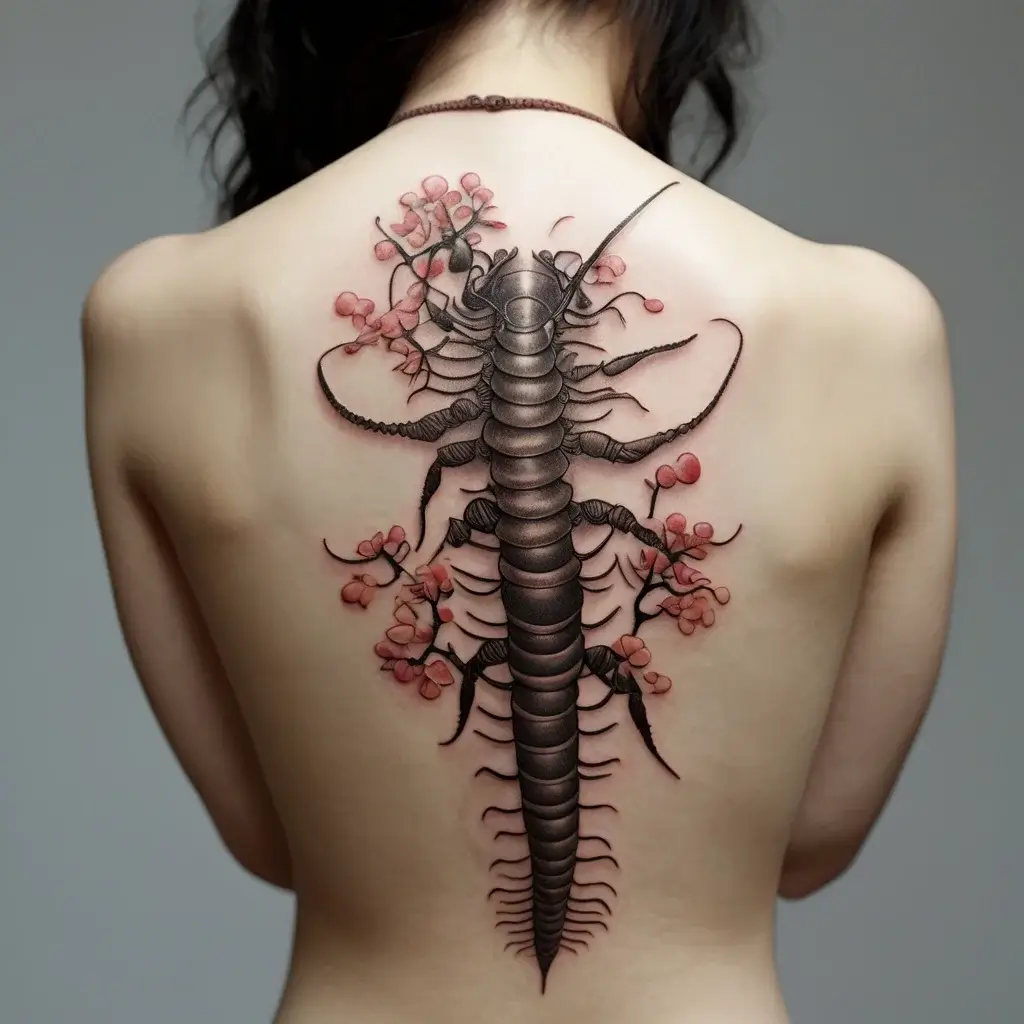
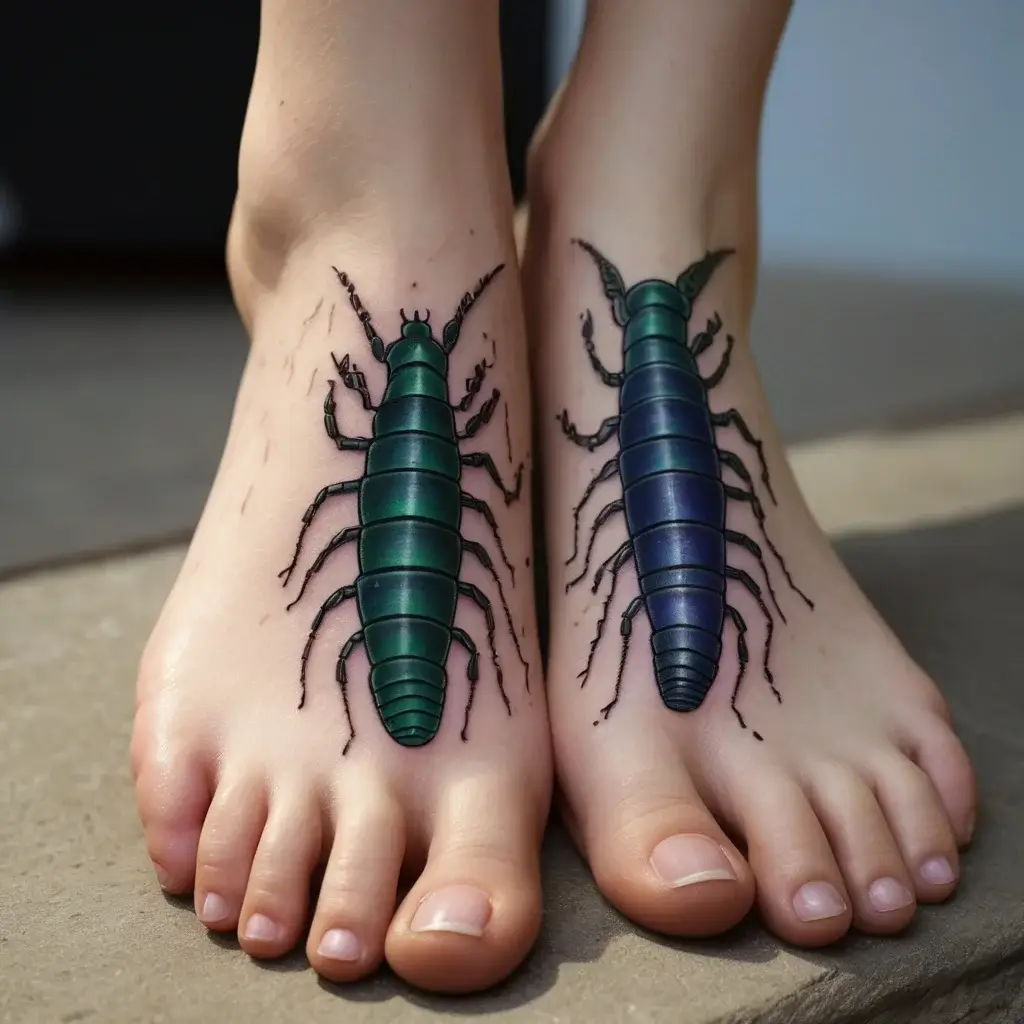
Centipede Tattoos in Modern Tattoo Culture
Japanese centipede tattoos are catching the eye in today’s tattoo scene, mixing age-old traditions with fresh, modern vibes. These tattoos carry a story steeped in folklore but have found a new groove as artists and tattoo lovers put their own spin on them.
Today’s Take on the Centipede Motif
Modern tattoo artists and those who wear their art are giving the centipede a new lease on life. Its long, flexible body makes it a natural fit for wrapping around arms, legs, or along the spine, turning it into more than just a tattoo—it’s a statement piece. While it might still spook some with its looks, many now see it as a symbol of protection and a testament to enduring tough times.
Tattoo artists today love tweaking this design to make it personal. They might throw in some modern flair with unexpected bursts of colour or mix in geometric shapes that give the centipede a whole new dimension. This isn’t just about sticking to tradition; it’s about making the tattoo truly yours.
Blending Old and New
In the tattoo world, tradition meets the trend. While old-school centipede tattoos were all about realism and subtle colours, the new school is shaking things up. You might see a centipede tattoo with bright, bold colours or abstract shapes that turn the tattoo into a modern masterpiece.
Some artists are pushing boundaries even further by using techniques like 3D tattooing, making the centipede look like it’s moving right on your skin. These contemporary touches don’t just update the look; they transform the centipede into a piece of living art.
This mix of the traditional and the trendy keeps the centipede tattoo not just relevant but exciting in today’s tattoo culture. It’s more than just a nod to the past—it’s a canvas for personal expression that resonates with the here and now. Whether you’re drawn to its historical roots or its modern makeover, a centipede tattoo is a link between the old and the new, a piece of art that tells a story on your skin.
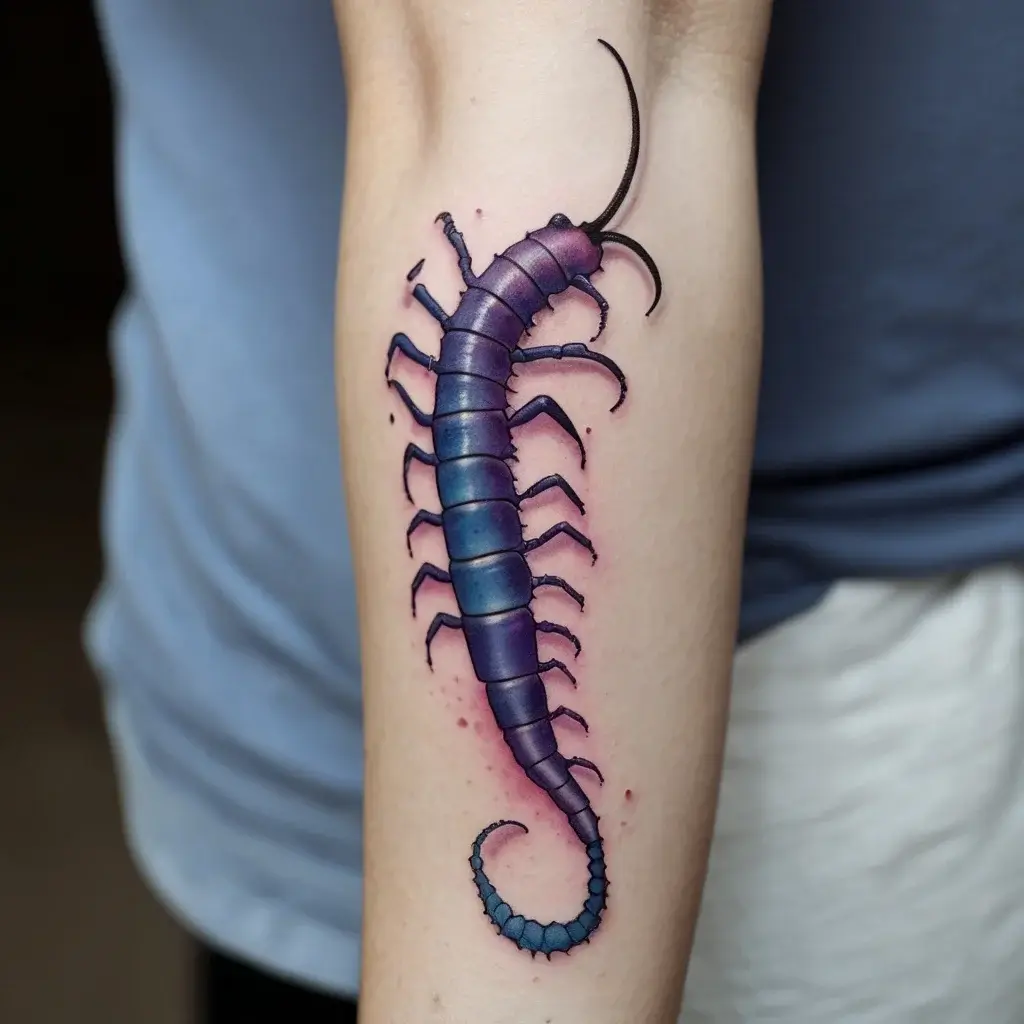


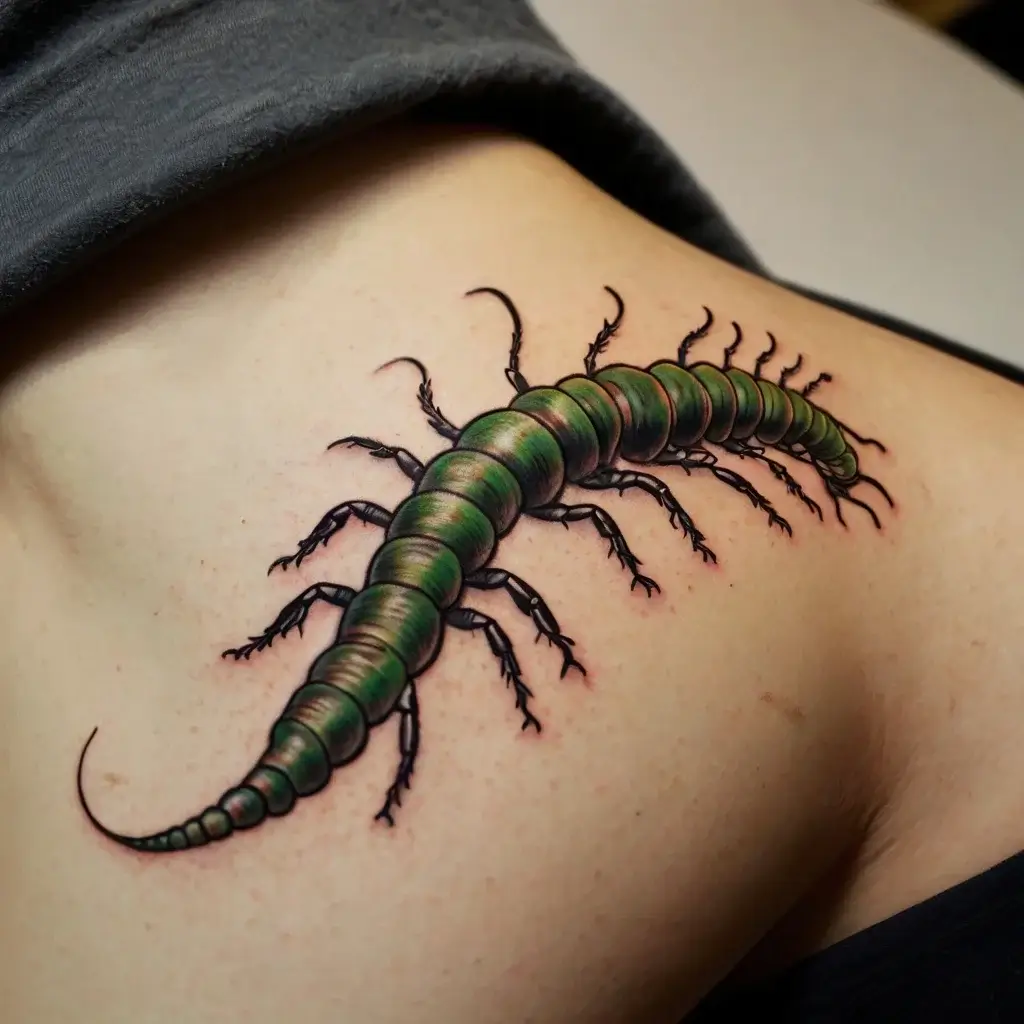

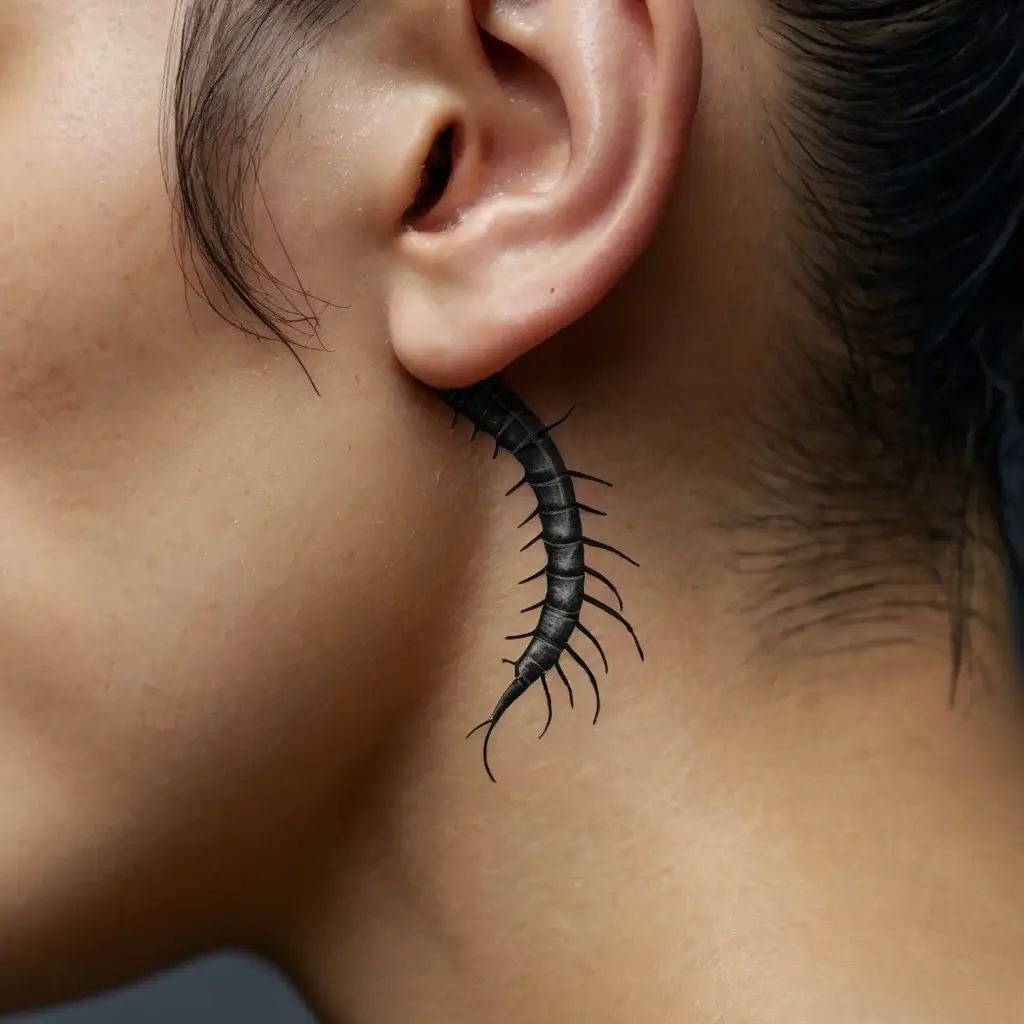
Centipede Tattoos in Modern Tattoo Culture
Have you noticed more Japanese centipede tattoos lately? They’re catching on, and not just because they look cool. These tattoos carry deep meanings of strength and protection, making them more than just a trend.
Why Japanese Centipede Tattoos Are Gaining Popularity?
People today love tattoos that tell a story or connect them to other cultures. The Japanese centipede, or mukade, fits the bill perfectly. It’s not just about the fierce look of the centipede with its long body and many legs; it’s about what it symbolizes—courage, protection, and overcoming challenges.
Mixing Old and New Styles
Tattoo artists are getting creative with these centipedes. They mix traditional black and grey with bold colours and modern designs. This mix helps people show off their respect for ancient symbols while keeping their style fresh and unique.
A Tattoo for Everyone
What’s cool about these tattoos is how they’ve gone global. You don’t have to be from Japan to appreciate or wear a mukade tattoo. They speak to universal themes like facing fears and protecting oneself, which is why people from all over are drawn to them.
In today’s tattoo scene, Japanese centipede tattoos stand out. They connect us to history while letting us express our personal stories and styles.
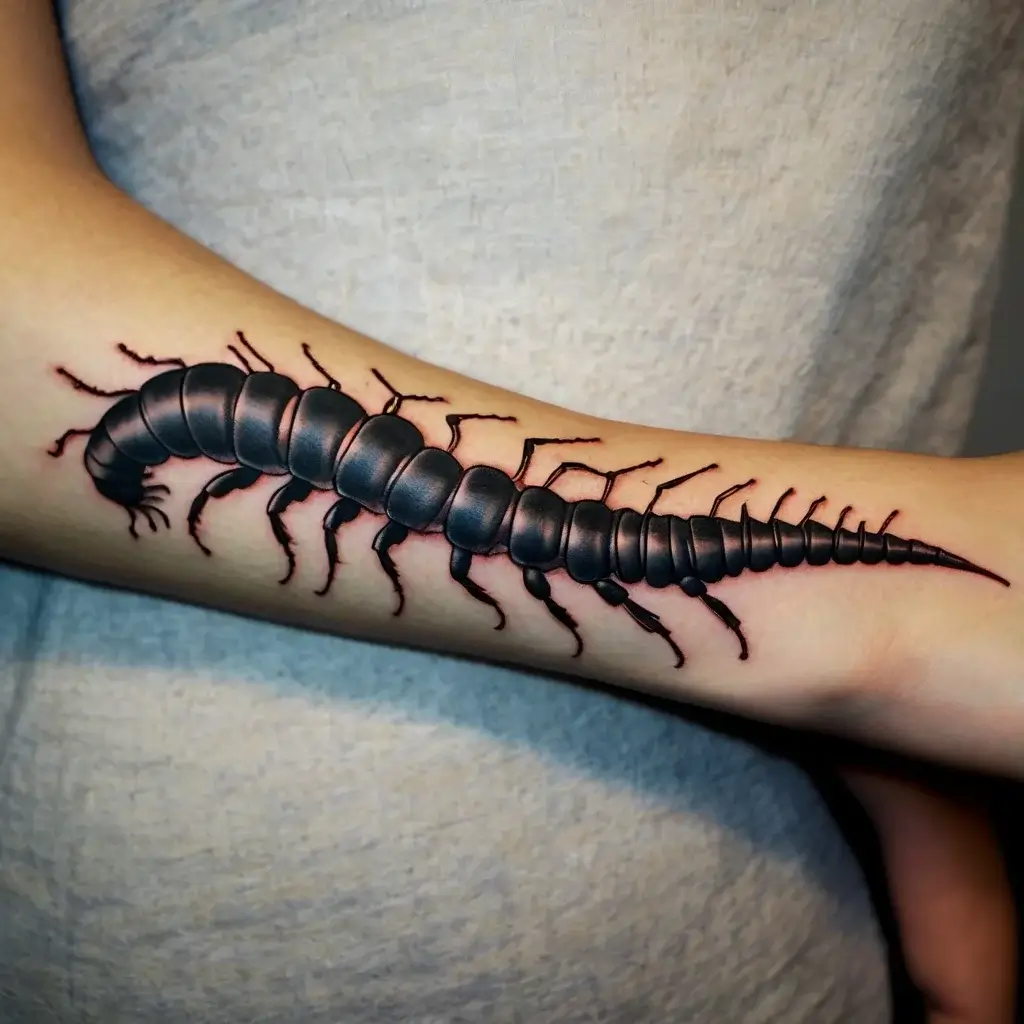
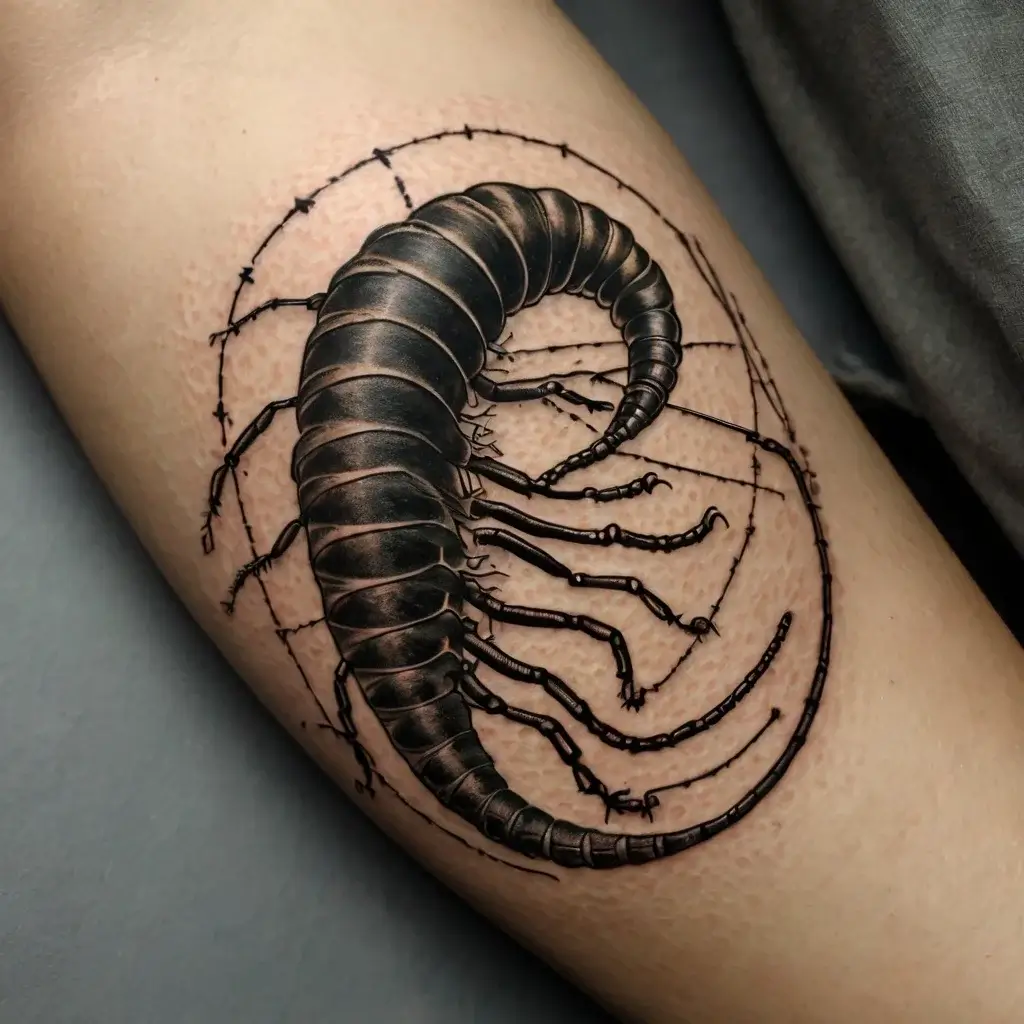
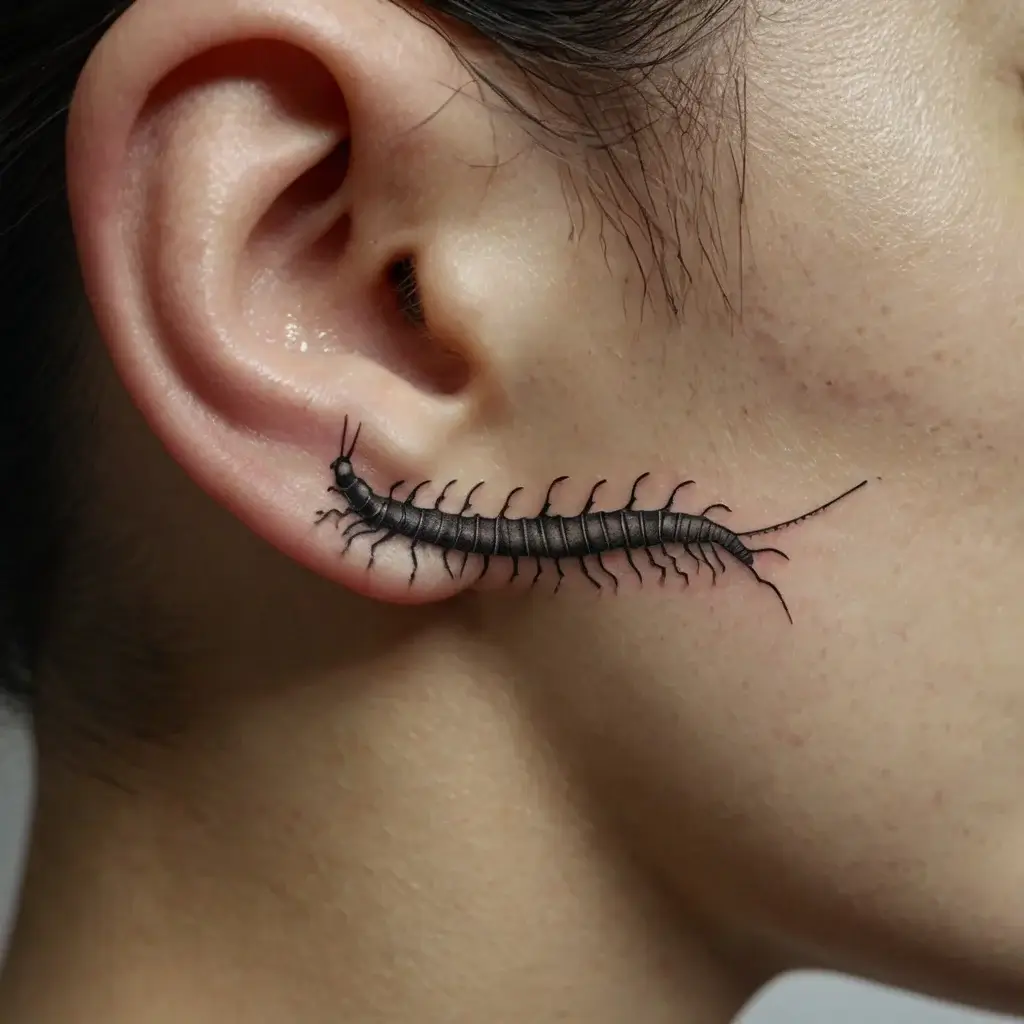
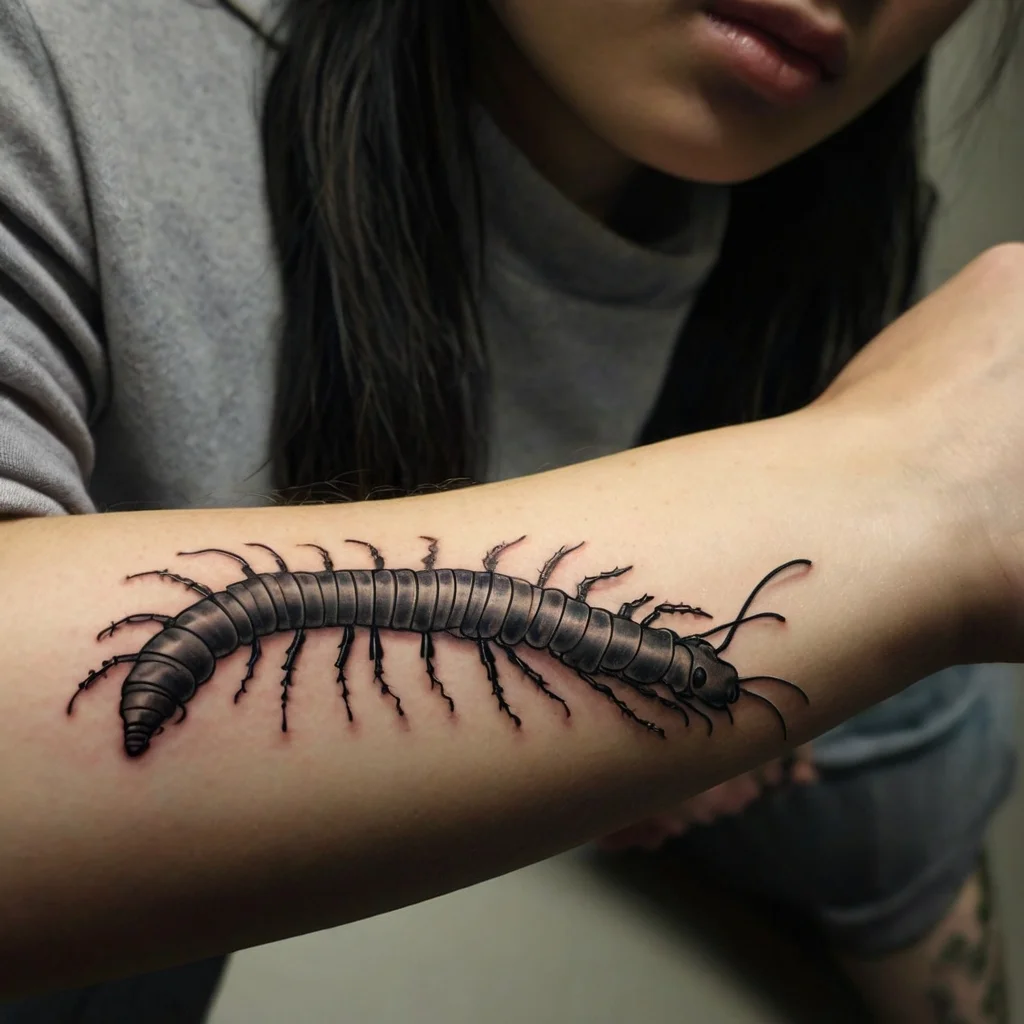
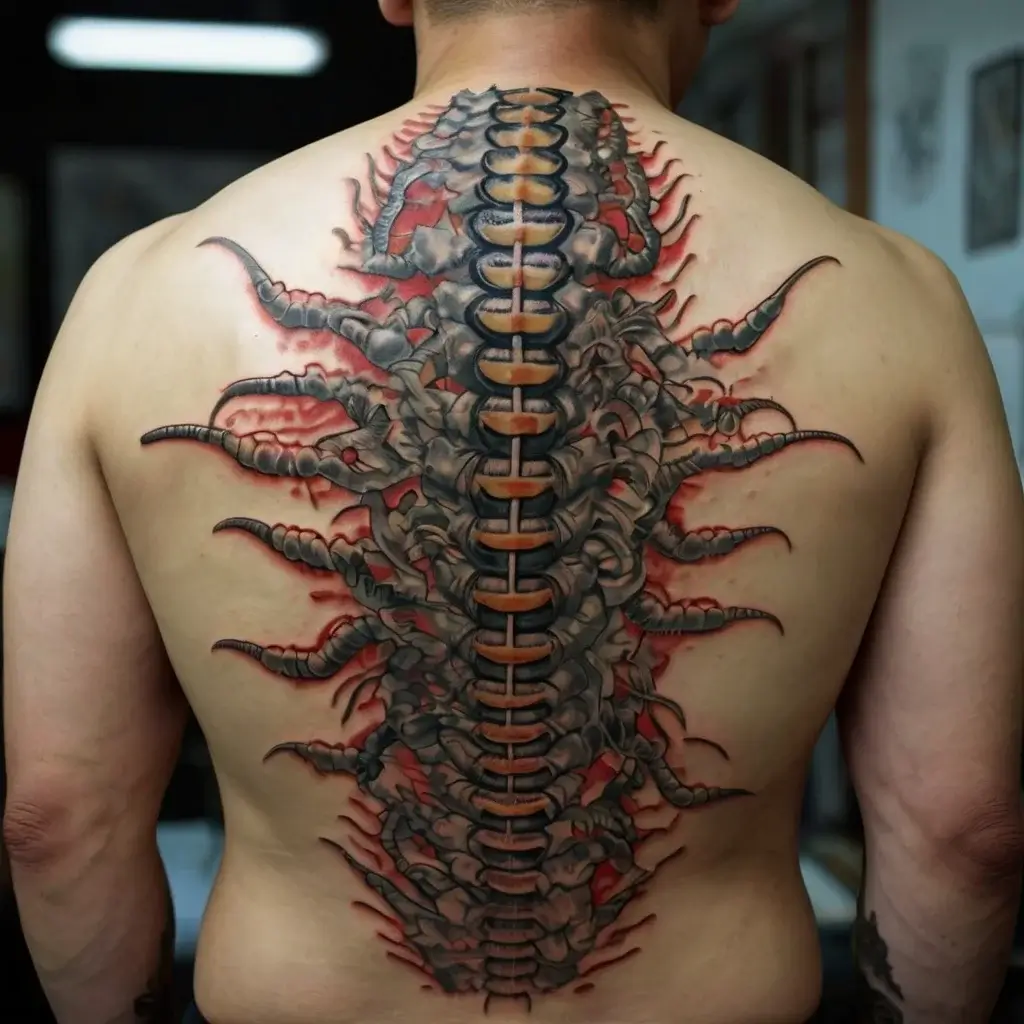

10 Stunning Japanese Centipede Tattoos and Their Significance
1. The Full-Back Mukade
A full-back tattoo featuring a centipede winding from the shoulders down to the lower back. This placement symbolizes protection and strength, covering the spine — the pillar of the human body — and serving as a guardian.
2. Climbing Leg Centipede
This tattoo wraps around the calf or thigh, resembling the centipede’s natural motion. It signifies progress and perseverance, mirroring the centipede’s relentless movement forward, ever climbing.
3. Arm Sleeve Mukade
An arm sleeve featuring a centipede from shoulder to wrist. It is often combined with other traditional Japanese elements like sakura blossoms or koi fish, representing a blend of strength and grace.
4. Minimalist Centipede
A single, simple line forms a centipede along a discreet part of the body, such as the side of the torso. This minimalist approach signifies a quiet strength and a personal, introspective journey.
5. Chest to Arm Centipede
Starting at the chest and slithering down the arm, this design emphasizes courage and readiness to face challenges, with the centipede poised as if in attack mode, protecting the heart and soul of the wearer.
6. Colorful Mukade
Breaking from tradition, a vibrant, colourful centipede tattoo uses modern hues to bring new life and energy to the motif. This version might symbolize creativity and a vibrant spirit, coupled with the traditional attributes of protection.
7. Interwoven Mukade
A tattoo where the centipede is interwoven with other animals or natural elements, suggests a harmony between various aspects of nature and life. It highlights interconnectedness and mutual dependence.
8. Footprint Centipede
Placed on the foot, this tattoo signifies the wearer’s journey through life, with the centipede acting as a guide and protector on the path, always in contact with the earth and moving steadily forward.
9. Geometric Centipede
Featuring geometric shapes and lines that form the centipede, this modern tattoo suggests not only the traditional meanings but also a sense of order and precision in life’s chaos.
10. Ancient Guardian Mukade
A tattoo that combines the centipede with ancient symbols or scripts, perhaps even integrating mythological elements like dragons or phoenixes. This design reflects a deep respect for heritage and the age-old role of the centipede as a protector in Japanese folklore.
Conclusion
Japanese centipede tattoos pack a lot of meaning into every line and curve. These tattoos symbolize protection and strength, connecting wearers to the powerful qualities of the centipede. People who see these tattoos can’t help but notice their bold and intricate designs, which often spark curiosity and admiration.
This tattoo style is not just staying in Japan; it’s travelling worldwide and changing as it goes. Artists are mixing old Japanese techniques with new ideas, making these tattoos appealing to more and more people.
